Singer 5560 Instruction Manual
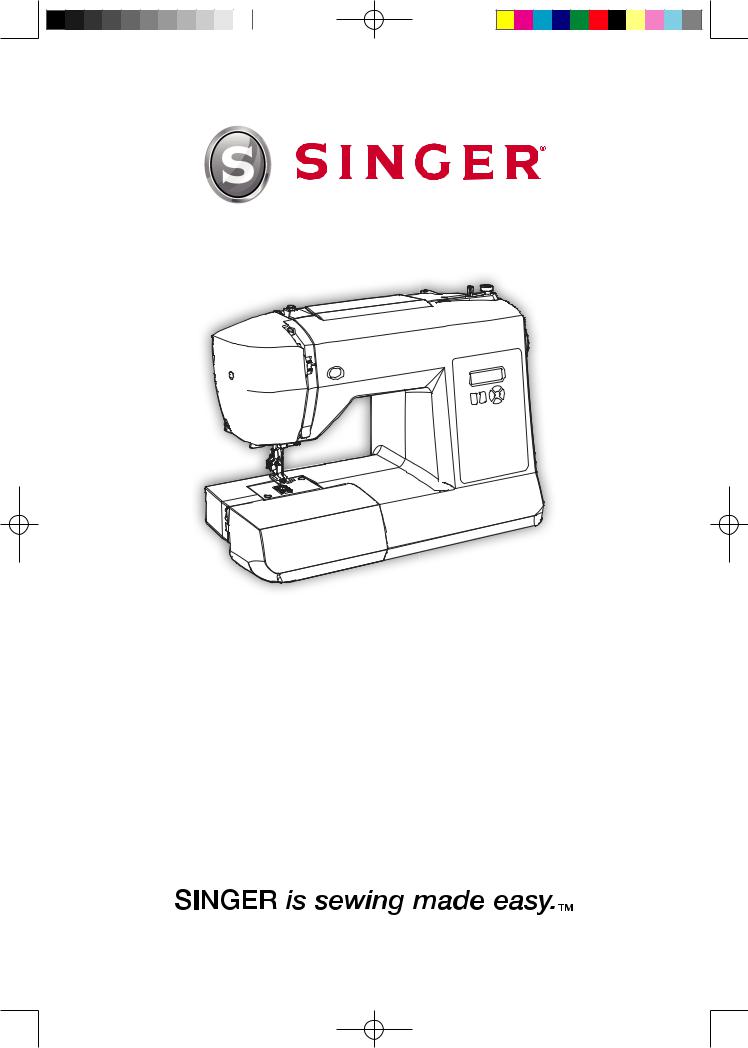
INSTRUCTION MANUAL
5560
F-1
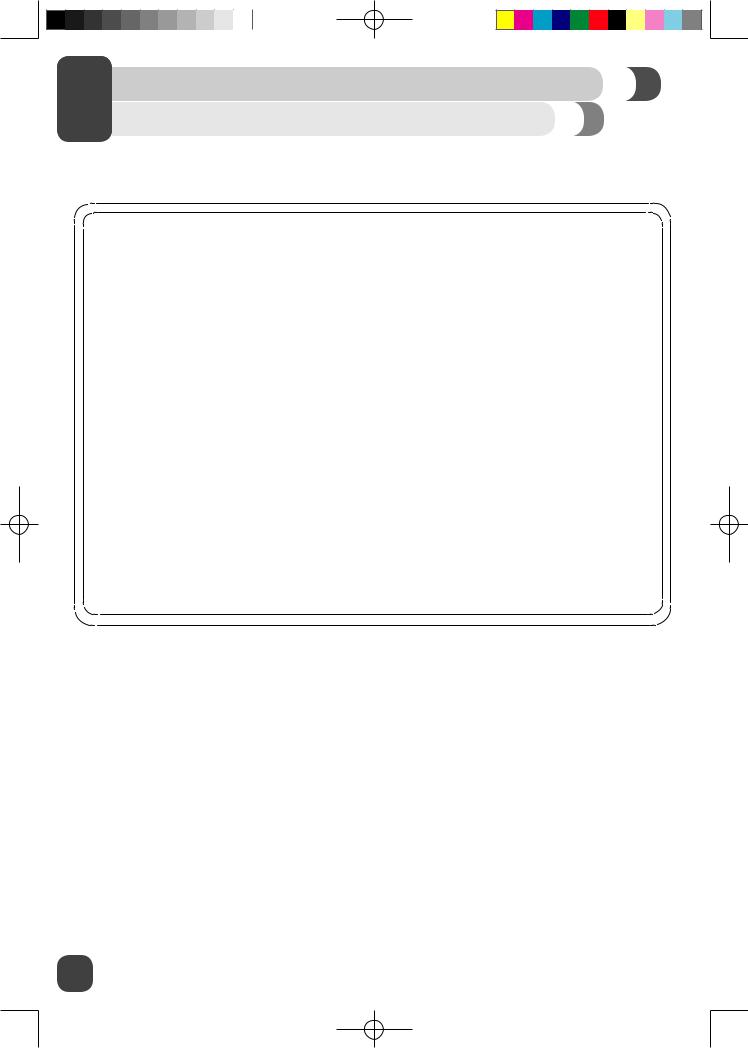
2 INTRODUCTIONWelcome
Welcome to the SINGER® family and CONGRATULATIONS on purchasing a brand new SINGER® sewing machine!
The SINGER® brand has stood for quality in sewing for over 160 years.
We design our machines for sewists of all skill levels so that the joy of sewing, creating, do-it-yourself, crafting and more can be enjoyed by all. It is important to us that you have the easiest and most successful sewing experience, so we have provided a wide array of helpful resources:
1.An instruction manual with easy-to-understand graphics and step-by-step instructions.
2.Assistance on the web at www.singerco.com
3.Personal assistance via email: talktous@singerco.com
4.Live, one-on-one help from one of our SINGER® Sewing Assistants, at 1-800-474-6437. (North America Only)
We’re ready to help and hope that you enjoy your SINGER® sewing machine.
Happy Sewing!
2
F-2
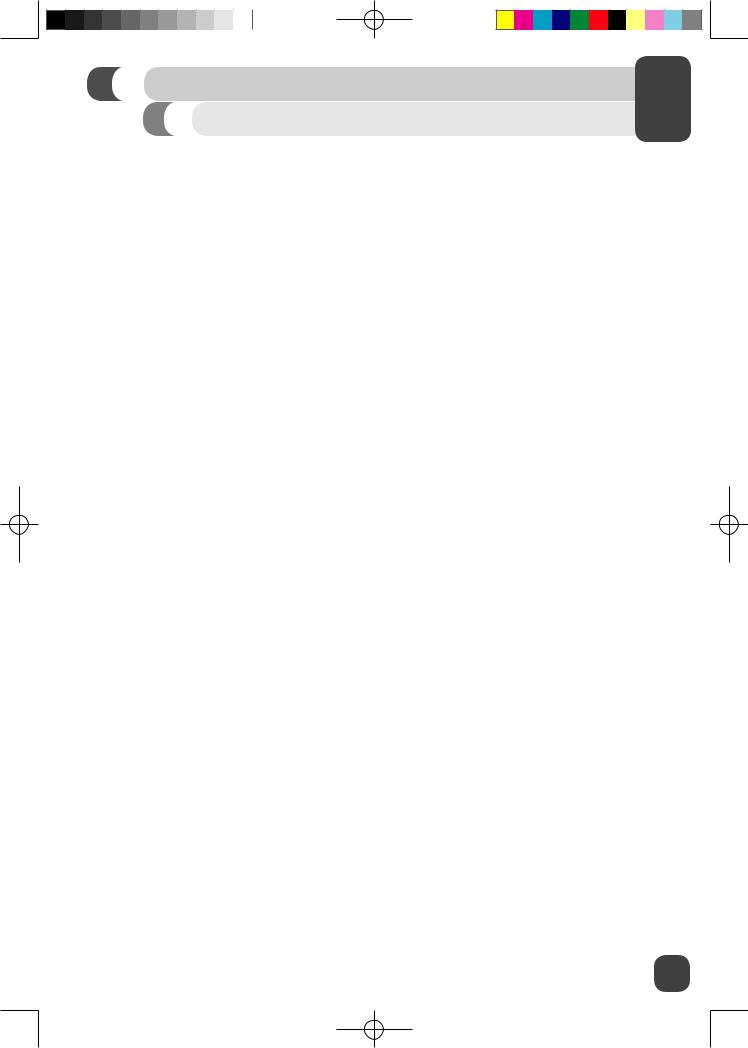
INTRODUCTION
Important Safety Instructions
This household sewing machine is designed to comply with IEC/EN 60335-2-28 and UL1594.
IMPORTANT SAFETY INSTRUCTIONS
When using an electrical appliance, basic safety precautions should always be followed, including the following:
Read all instructions before using this household sewing machine. Keep the instructions in a suitable place close to the machine. Make sure to hand them over if the machine is given to a third party.
DANGER - To reduce the risk of electric shock :
-A sewing machine should never be left unattended when plugged in. Always unplug this sewing machine from the electric outlet immediately after using and before cleaning, removing covers, lubricating or when making any other user servicing adjustments mentioned in the instruction manual.
WARNING - To reduce the risk of burns, fire, electric shock, or injury to person :
- Do not allow to be used as a toy. Close attention is necessary when this sewing machine is used by or near children.
- Use this sewing machine only for its intended use as described in this manual. Use only attachments recommended by the manufacturer as contained in this manual.
- Never operate this sewing machine if it has a damaged cord or plug, if it is not working properly, if it has been dropped or damaged, or dropped into water. Return the sewing machine to the nearest authorized dealer or service center for examination, repair, electrical or mechanical adjustment.
- Never operate the sewing machine with any air openings blocked. Keep ventilation openings of the sewing machine and foot control free from the accumulation of lint, dust, and loose cloth.
- Keep fingers away from all moving parts. Special care is required around the sewing machine needle.
- Always use the proper needle plate. The wrong plate can cause the needle to break. - Do not use bent needles.
- Do not pull or push fabric while stitching. It may deflect the needle causing it to break.
- Wear safety glasses.
- Switch the sewing machine off (“O”) when making any adjustment in the needle area, such as threading needle, changing needle, threading bobbin, or changing presser foot, etc.
- Never drop or insert any object into any opening. - Do not use outdoors.
- Do not operate where aerosol (spray) products are being used or where oxygen is being administrated.
- To disconnect, turn all controls to the off (“O”) position, then remove plug from outlet. - Do not unplug by pulling on cord. To unplug, grasp the plug, not the cord.
- The foot control is used to operate the machine. Avoid placing other objects on the foot control.
- Do not use the machine if it is wet.
- If the LED lamp is damaged or broken, it must be replaced by the manufacturer or
its service agent or a similarly qualified person, in order to avoid a hazard.
3
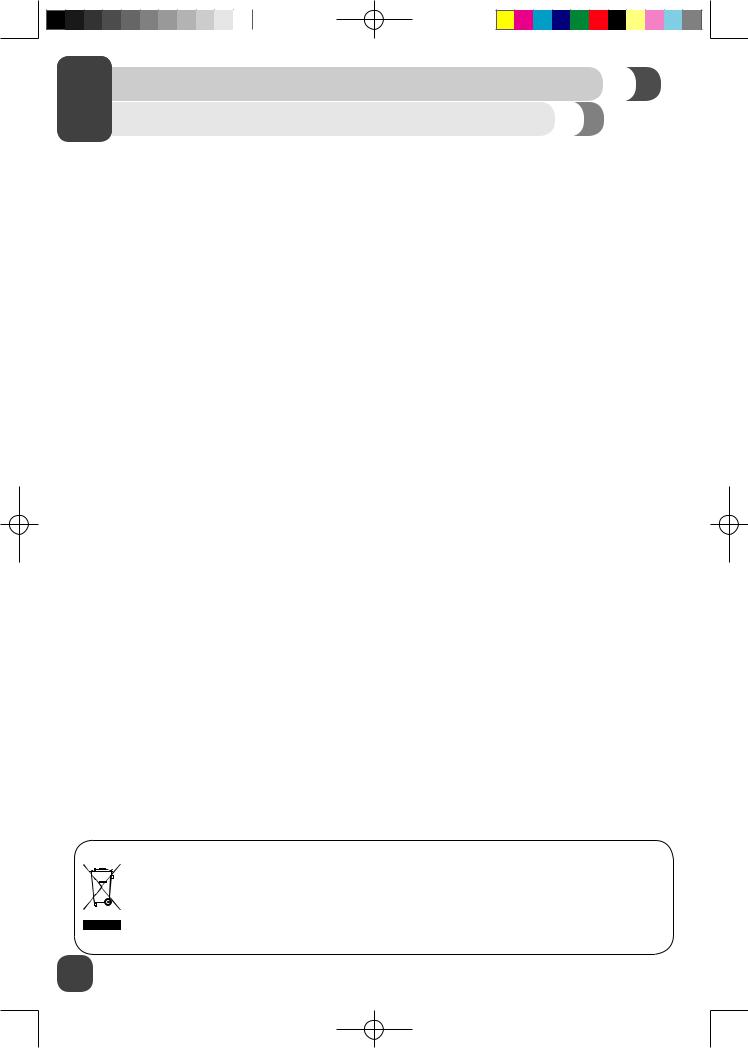
2 INTRODUCTION
Important Safety Instructions
-If the supply cord connected with the foot control is damaged, it must be replaced by the manufacturer or its service agent or a similarly qualified person, in order to avoid a hazard.
-This sewing machine is provided with double insulation. Use only identical replacement parts. See instructions for Servicing of Double-Insulated Appliances.
SAVE THESE INSTRUCTIONS
For Europe only :
This appliance can be used by children aged from 8 years and above and persons with reduced physical, sensory or mental capabilities or lack of experience and knowledge if they have been given supervision or instruction concerning use of the appliance in a safe way and understand the hazards involved. Children shall not play with the appliance. Cleaning and user maintenance shall not be made by children without supervision.
The noise level under normal operating conditions is less than 72dB(A).
The machine must only be used with foot control of type JF-1000 manufactured by Jaguar International Corporation or YC-485EC manufactured by Taiwan Yamamoto Electric Corp.
For outside Europe :
This sewing machine is not intended for use by persons (including children) with reduced physical, sensory or mental capabilities, or lack of experience and
knowledge, unless they have been given supervision or instruction concerning use of the sewing machine by a person responsible for their safety. Children should be supervised to ensure that they do not play with the sewing machine.
The noise level under normal operating conditions is less than 72dB(A).
The machine must only be used with foot control of type JF-1000 manufactured by Jaguar International Corporation or YC-485EC manufactured by Taiwan Yamamoto Electric Corp.
SERVICING OF DOUBLE INSULATED PRODUCTS
In a double-insulated product, two systems of insulation are provided instead of grounding. No ground means is provided on a double-insulated product, nor should a means for grounding be added to the product. Servicing of a double-insulated product requires extreme care and knowledge of the system and should be done only by qualified service personnel. Replacement parts for a double-insulated product must be identical to those parts in the product. A double-insulated product is marked with the words “DOUBLE INSULATION” or “DOUBLE INSULATED”.
Please note that on disposal, this product must be safely recycled in accordance with relevant National legislation relating to electrical/electronic products. Do not dispose of electrical appliances as unsorted municipal waste, use separate collection facilities. Contact your local government for information regarding the collection systems available. When replacing old appliances with new ones, the retailer may be legally obligated to take back your old appliance for disposal free of charge.
If electrical appliances are disposed of in landfills or dumps, hazardous substances can leak into the groundwater and get into the food chain, damaging your health and well-being.
4
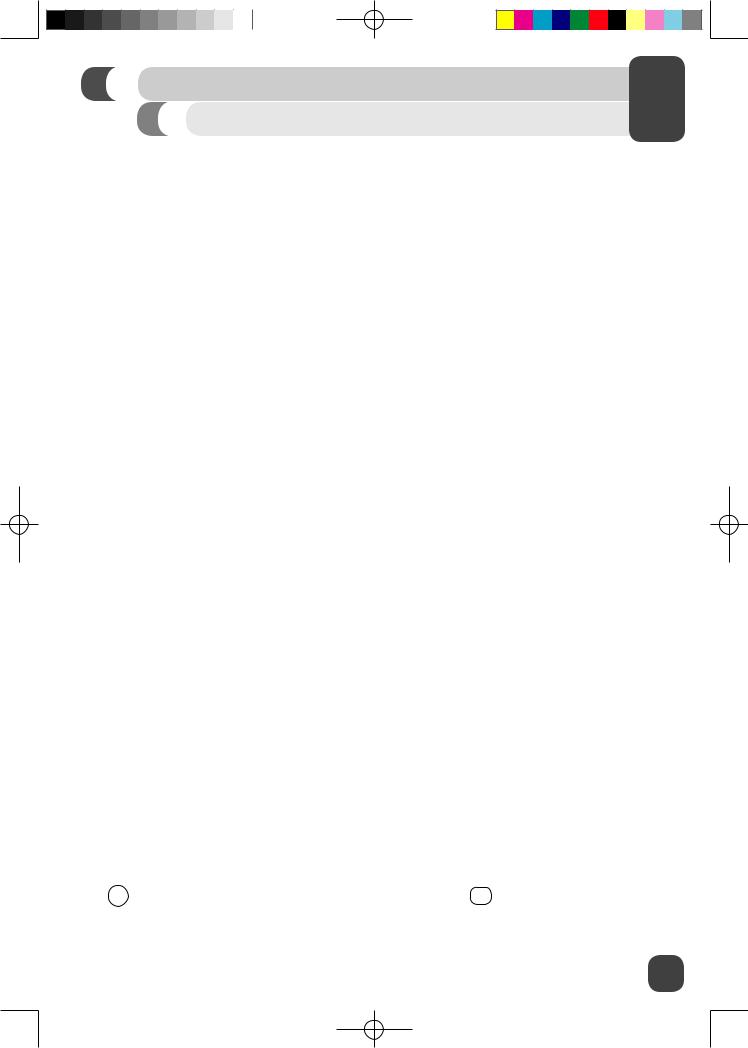
|
INTRODUCTION |
|
Table of Contents |
INTRODUCTION.............................................................................................................. |
2-5 |
Welcome.......................................................................................................................................... |
2 |
Important Safety Instructions........................................................................................................ |
3-4 |
Table of Contents............................................................................................................................. |
5 |
ABOUT YOUR MACHINE............................................................................................... |
6-9 |
Main Parts of the Machine Front...................................................................................................... |
6 |
Main Parts of the Machine Back...................................................................................................... |
7 |
Needle and Presser Foot Area........................................................................................................ |
8 |
Removable Storage Compartment and Accessories....................................................................... |
9 |
GETTING READY TO SEW........................................................................................ |
10-15 |
Powering Your Machine................................................................................................................. |
10 |
Winding the Bobbin......................................................................................................................... |
11 |
Inserting the Bobbin....................................................................................................................... |
12 |
Threading the Upper Thread......................................................................................................... |
13 |
Automatic Needle Threader........................................................................................................... |
14 |
Drawing Up the Bobbin Thread..................................................................................................... |
15 |
START SEWING.......................................................................................................... |
16-27 |
Before You Start Sewing................................................................................................................ |
16 |
Stitch Formation............................................................................................................................. |
17 |
LCD Display and Function Buttons................................................................................................ |
18 |
Stitch Selection.............................................................................................................................. |
19 |
Sewing a Straight Stitch................................................................................................................. |
20 |
Sewing a Decorative Stitch............................................................................................................ |
21 |
Sewing a Stretch Stitch.................................................................................................................. |
22 |
Sewing a 1-Step Buttonhole.......................................................................................................... |
23 |
Sewing a Button............................................................................................................................. |
24 |
Inserting and Changing Needles................................................................................................... |
25 |
Changing the Presser Foot............................................................................................................ |
26 |
Sew Easy Foot............................................................................................................................... |
26 |
Zipper Foot.................................................................................................................................... |
27 |
Helpful LCD Display Messages..................................................................................................... |
27 |
TROUBLESHOOTING AND MAINTENANCE............................................................ |
28-33 |
Troubleshooting........................................................................................................................ |
28-32 |
Maintenance.................................................................................................................................. |
33 |
APPENDIX - GLOSSARY................................................................................................. |
34 |
Glossary of Key Sewing Terms...................................................................................................... |
34 |
Explanation key to notations in this manual:
= Helpful information |
= Could cause harm |
→ = Impacts sewing results |
To ensure that you are always provided with the most modern sewing capabilities, the manufacturer reserves the right to change appearance, design or accessories of this sewing machine when considered necessary.
SINGER® & Singer is Sewing Made Easy is a registered trademark of The SINGER® Company Limited S.à.r.l. or its affiliates.
© 2016 The SINGER® Company Limited S.à.r.l. or its affiliates. All rights reserved.
5
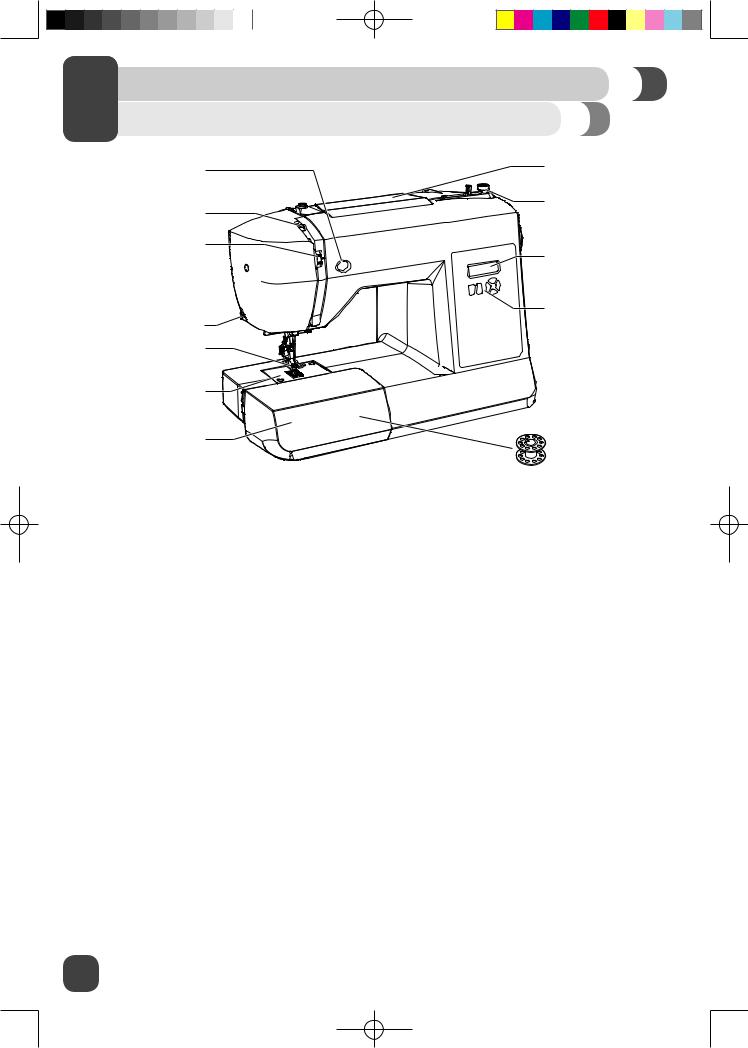
2 |
ABOUT YOUR MACHINE |
|
|
Main Parts of the Machine Front |
|
|
1 |
8 |
|
2 |
9 |
|
|
|
|
3 |
10 |
|
|
|
|
4 |
11 |
|
|
|
|
5 |
|
|
6 |
|
|
7 |
12 |
|
|
1.REVERSE SEWING BUTTON reverses stitching direction, for example, when securing the beginning and ending of a seam. (See Page 20)
2.THREAD TAKE-UP LEVER controls the flow of the upper thread while sewing. (See Page 13)
3.THREAD TENSION DIAL allows you to select just the right tension for your stitch, thread and fabric. (See Page 17)
4.THREAD CUTTER is conveniently located for trimming thread ends at the end of sewing.
5.PRESSER FOOT holds fabric against feed teeth, drawing fabric under the foot for you as you sew. (See Page 26)
6.NEEDLE PLATE has guidelines to help you keep seams straight. (See Page 8)
7.REMOVABLE STORAGE COMPARTMENT provides flat surface for sewing, storage for accessories, and provides access to the free arm. (See Page 9)
8.HANDLE is used for lifting and transporting the machine.
9.BOBBIN WINDING STOPPER determines when bobbin is full and disengages automatically. (See Page 11)
10.LCD SCREEN visually displays the stitch number, the stitch length and the stitch width. (See Page 18)
11.FUNCTION BUTTONS control the stitch selection, the stitch width and the stitch length. (See Page 18)
12.BOBBIN holds the thread that forms the stitching that appears on the bottom side of the fabric. (See Page 11)
6
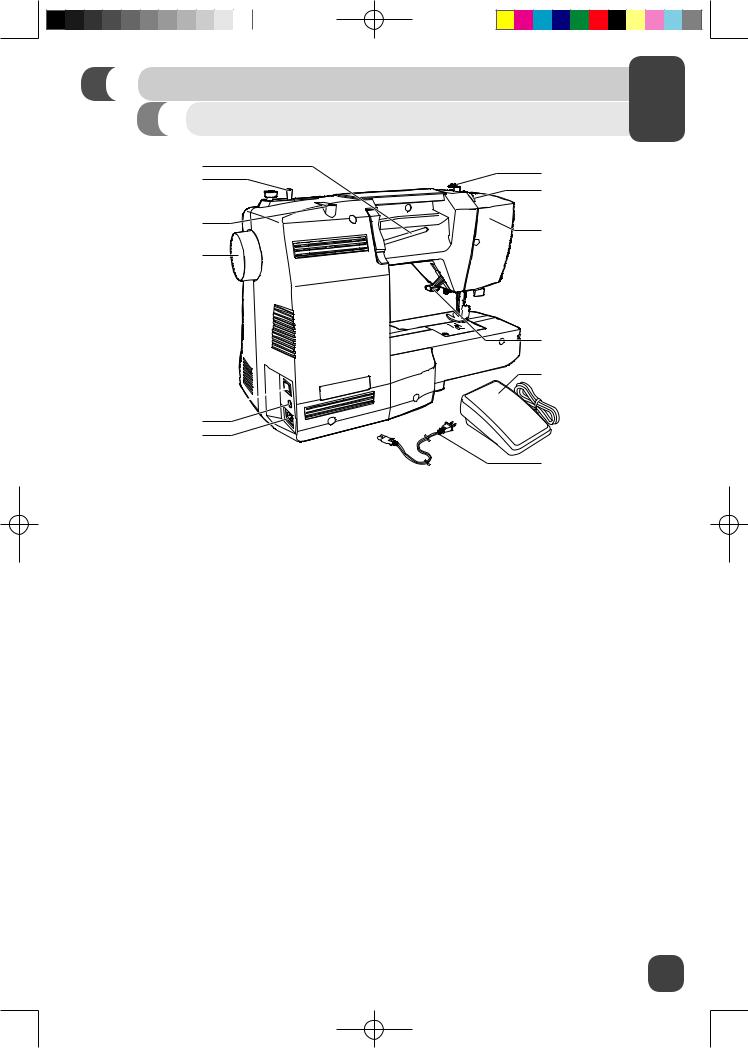
ABOUT YOUR MACHINE
Main Parts of the Machine Back
1 |
8 |
|
2 |
||
9 |
||
|
||
3 |
10 |
4
 11 12
11 12
13
5
6 7
14
1.HORIZONTAL SPOOL PIN holds the thread spool and spool cap for the upper thread. You will need to raise it to the vertical upward position when sewing.
2.BOBBIN WINDING SPINDLE holds bobbin as it winds. (See Page 11)
3.HOLE FOR SECOND SPOOL PIN is used to hold an additional spool pin, for thread spools to be used in upright position or for using two spools at once for twin needle sewing.
4.HANDWHEEL (ALWAYS TURN IT TOWARD YOU), controls movement of the needle and the thread take-up lever.
5.POWER AND LIGHT SWITCH turns on machine and sewing light simultaneously. (See Page 10)
6.FOOT CONTROL SOCKET is used to connect the foot control. (See Page 10)
7.MAIN PLUG SOCKET is used to connect the power cord. (See Page 10)
8.BOBBIN WINDING TENSION DISK holds the thread snuggly to help ensure smooth and even bobbin winding. (See Page 11)
9.PRE-TENSION THREAD GUIDE helps maintain the flow of the thread during sewing. (See Page
13)
10.FACE PLATE houses and protects the interior mechanisms of the machine.
11.ONE STEP BUTTONHOLE LEVER automatically determines the length of the buttonhole when lowered. (See Page 23)
12.PRESSER FOOT LIFTER raises and lowers presser foot. It should be placed up for machine threading and down for sewing. (See Page 13)
13.FOOT CONTROL controls sewing speed by the amount of pressure applied by user. (See Page 10)
14.POWER CORD connects the machine to the power source. (See Page 10)
7
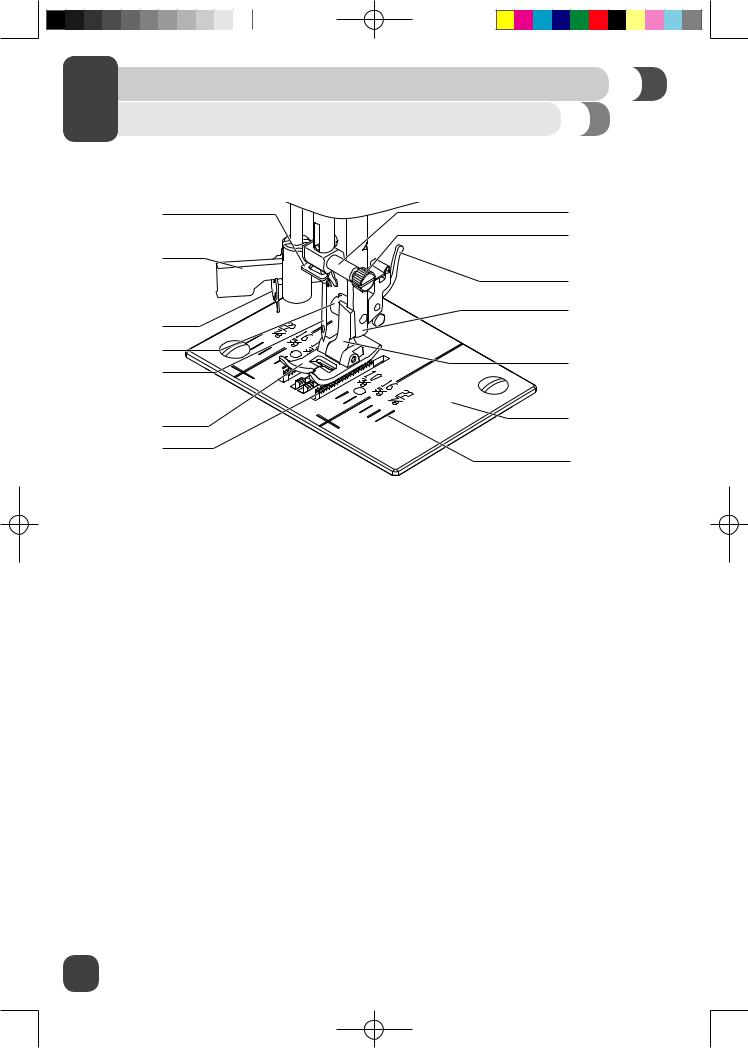
2 ABOUT YOUR MACHINE
Needle and Presser Foot Area
1 |
8 |
|
2 |
9 |
|
|
||
|
10 |
|
3 |
11 |
|
|
||
4 |
12 |
|
5 |
||
|
||
6 |
13 |
|
|
||
7 |
14 |
|
|
1.THREAD GUIDE controls movement of upper thread.
2.NEEDLE THREADER LEVER is used to engage the automatic needle threader mechanism.
3.NEEDLE THREADER GUIDE holds thread securely before placing it in hook pin.
4.PRESSER FOOT SCREW secures the presser foot holder (shank) onto the presser bar.
5.NEEDLE holds thread during stitch formation.
6.PRESSER FOOT holds fabric against the feed teeth while sewing. Various optional presser feet are available, depending on fabric sewn and sewing techniques. (See Page 9)
7.FEED TEETH (OR FEED DOGS), which look like rows of teeth under the presser foot, control the movement of the fabric under the presser foot.
8.NEEDLE CLAMP holds the machine’s needle in position.
9.NEEDLE CLAMP SCREW secures the needle when placed in needle clamp.
10.PRESSER FOOT RELEASE LEVER is pressed to remove the presser foot. (See Page 26)
11.PRESSER BAR accommodates the presser foot holder.
12.PRESSER FOOT HOLDER (OR SHANK) holds presser foot.
13.NEEDLE PLATE covers the bobbin area and provides flat area around presser foot for sewing.
14.STITCHING GUIDELINES are used as a visual reference for guiding fabric straight while sewing.
The first line is 3/8” (10mm) from center needle position. The most popular seam allowance measurements are 1/2” (13mm) and 5/8” (16mm). The 1/2” seam allowance is the 2nd line, and the 5/8” seam allowance is the 3rd line from center needle position.
8
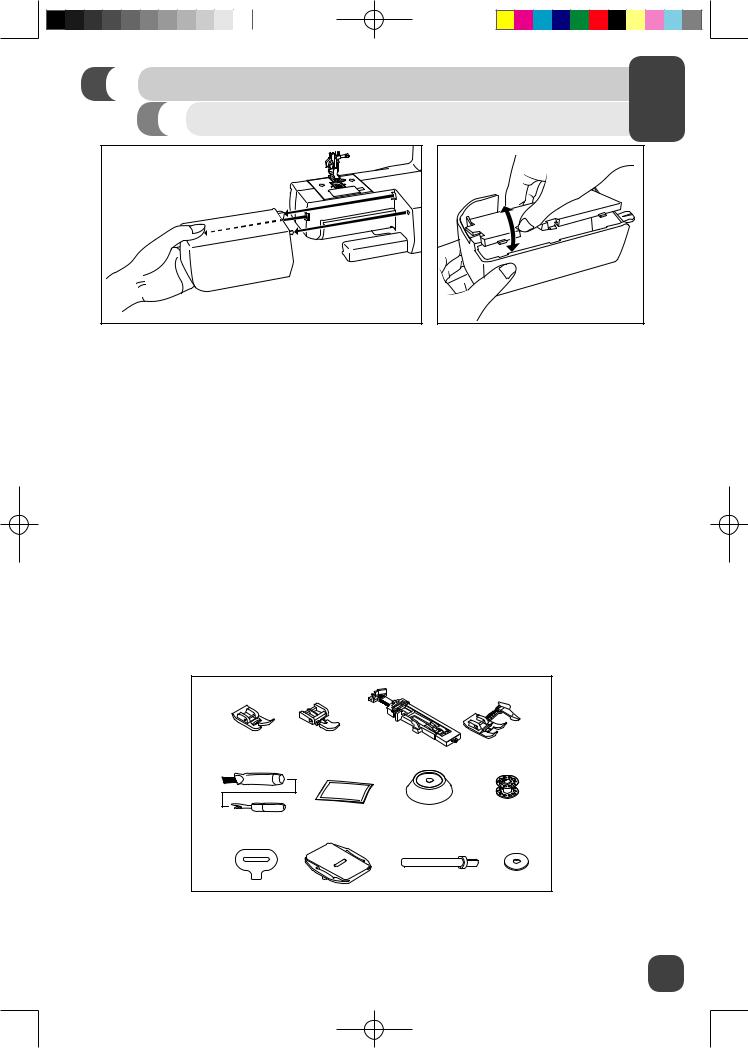
ABOUT YOUR MACHINE
Removable Storage Compartment and Accessories
Hold the Removable Storage Compartment horizontally, then pull toward the left to remove it from the machine. Doing this, you will have access to the free arm, which makes it easy to sew tubular projects like pant hems or sleeves. Additionally, you will find the machine’s accessories stored here (see below).
To replace the Removable Storage Compartment, hold it as shown in the illustration, and then push it to the right.
This machine comes with a standard assortment of presser feet and accessories.
Standard Accessories Included:
a.All Purpose Foot (for general sewing)
b.Zipper Foot (for inserting a zipper)
c.Buttonhole Foot (for making buttonholes)
d.Sew Easy Foot (for sewing accurate seams) THIS BONUS ITEM IS NOT INCLUDED WITH MACHINES SOLD IN SOME AREAS AND MAY BE AN OPTIONAL ACCESSORY. FOR INFORMATION ON PURCHASING THIS ITEM, GO TO WWW.SINGERCO.COM.
e.Seam Ripper/Brush (remove stitches/brush out lint)
f.Pack of Needles (replacement needles)
g.Spool Cap
h.Bobbins (SINGER® Class 15 metal bobbins)
i.Screwdriver (to remove needle plate for cleaning)
j.Darning Plate (cover for feed teeth)
k.Second Spool Pin (for sewing with an optional twin needle)
l.Spool Pin Felt (to cushion the spool of thread when using the second spool pin)
a |
b |
c |
d |
e |
f |
g |
h |
|
|||
i |
j |
k |
l |
|
|
|
Optional Accessories:
For information about additional presser feet, attachments and accessories that may be available for your machine, visit www.singerco.com
9
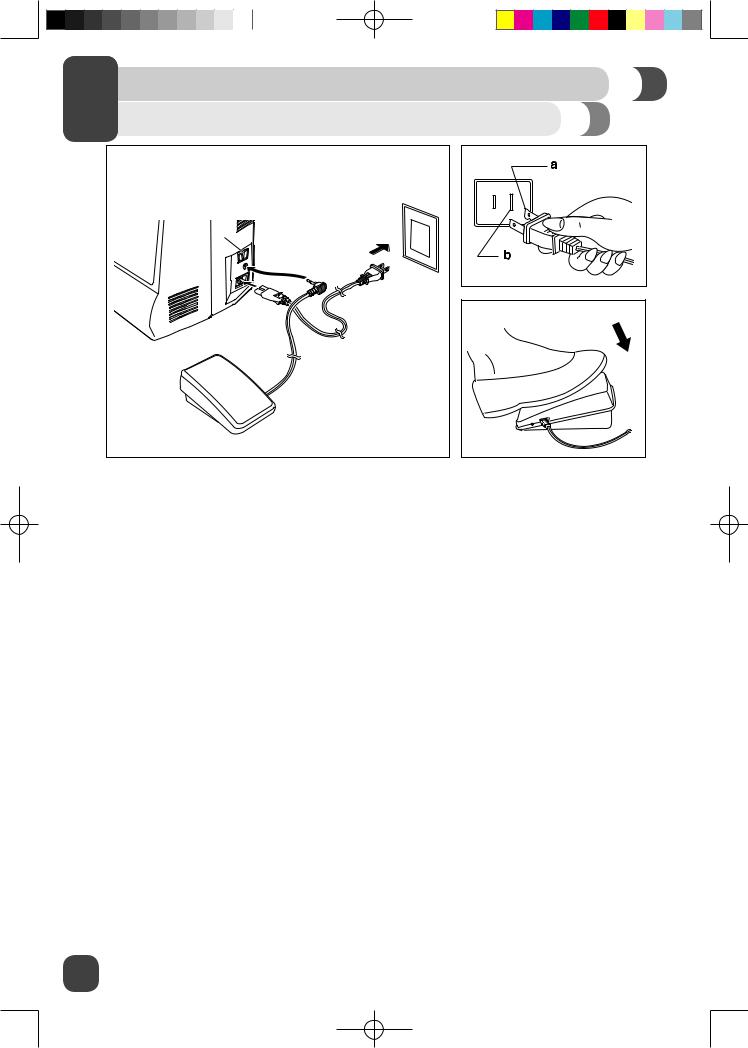
2 GETTING READY TO SEW
Powering Your Machine
A |
Connect the machine to a power source as illustrated. This machine is equipped with a polarized plug which must be used with the appropriate polarized outlet. (a and b)
Unplug power cord when machine is not in use.
Foot Control
The foot control regulates the sewing speed. When foot control is disconnected, the machine will not operate.
Sewing Light
Press main switch (A) to “ I ” for power and light.
For machine with a polarized plug (one blade is wider than the other). To reduce the risk of electric shock, this plug is intended to fit in a polarized outlet only one way. If it does not fit fully in the outlet, reverse the plug. If it still does not fit, contact a qualified electrician to install the proper outlet.
Do not modify the plug in any way.
Your SINGER® machine is adjusted to provide the best stitch results at normal room temperature. Extreme hot and cold temperatures can affect the sewing results.
After switching off, residual power may still remain in the machine. This may cause the light to stay on for a few seconds while the power is consumed. This is normal behavior for an energy efficient appliance.
10
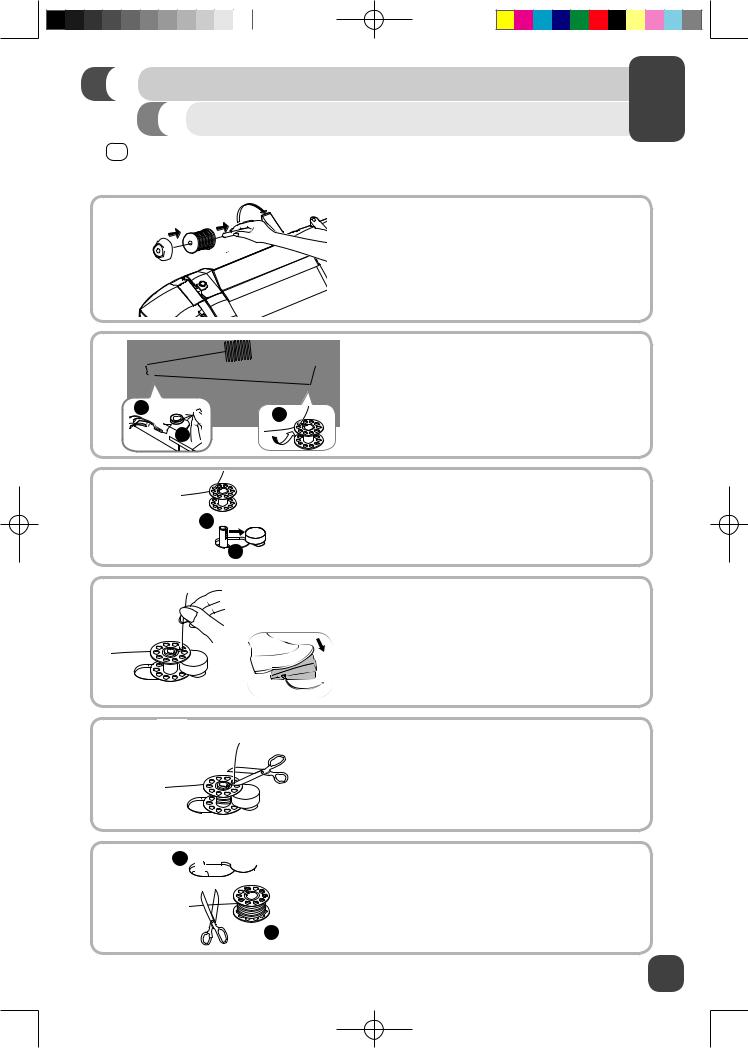
GETTING READY TO SEW
Winding the Bobbin
→ This machine uses SINGER® Class 15 metal bobbins.
Use only this style of bobbin when purchasing additional bobbins for your machine. Do not substitute with plastic bobbins.
A

 C
C 
 B
B
A
 B
B
A 


 B
B
1.Place thread spool and corresponding size spool holder onto spool pin. Spool holder should be large enough to cover the end of the thread spool so thread unreels smoothly. Use the larger side of the spool cap for big spools and the smaller side of the cap for small spools of thread.
2.(A) Slip thread into guide at top of machine.
(B)Place thread snuggly around bobbin winding tension disk to ensure that thread winds onto bobbin smoothly and consistently.
(C)Thread bobbin as shown, then place it onto the bobbin winding spindle.
3.Check that bobbin is pushed down fi rmly (A).
If it is not, the thread could begin winding under the bobbin. Push the bobbin and spindle fi rmly to the right (B).
4.Hold the thread end to get ready to wind. Step on the foot control gently as you hold the thread end. Allow it to wind a few revolutions slowly, then remove your foot from the foot control to stop.
5.Trim the thread end close to the top of the bobbin, then resume winding by stepping on the foot control.
6.The bobbin will stop winding when it is full. Lift your foot off the foot control. Push the bobbin to the left (A), then trim the thread and remove the bobbin from the spindle (B).
11
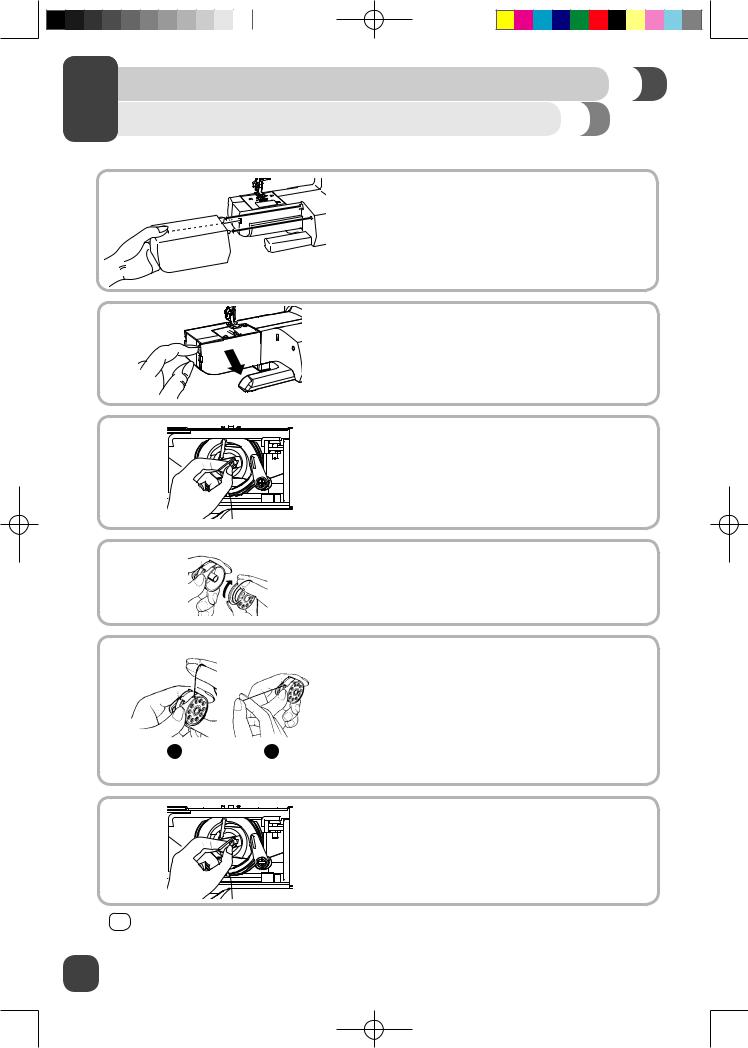
2 GETTING READY TO SEW
Inserting the Bobbin
Turn power switch off before inserting or removing the bobbin.
1. Take off the removable storage compartment.
2. Open the hinged cover.
3. Pull the bobbin case latch to remove the bobbin case from the bobbin holder.
4.Hold the bobbin case in one hand, then insert the bobbin so that the thread runs clockwise, as shown in the illustration.
5.First, bring the thread into the small slit (A) on the side of the bobbin case. Then, bring it underneath the metal guide, continuing until it is comes out of the opening at the bottom of the metal guide. You should feel it and hear it click in place. If it does not click in place, the machine will not sew. After clicking the thread in place, pull the thread in the direction shown (B).
A B
6. Once the bobbin has been placed in the bobbin case, hold the bobbin case by the latch so that the latch is pointing toward you. Insert into the bobbin case holder so that the metal extension is positioned at 12 o’clock. You should feel the bobbin case become seated securely in place. Release the latch.
→ The bobbin case must be properly seated into the holder or the machine will not sew. After placing it into the holder and releasing the tab, if the bobbin case seems loose, if it falls to one side, or if it is not pushed all the way in, remove it. Hold it by the latch and reinsert it until it is securely in place.
12
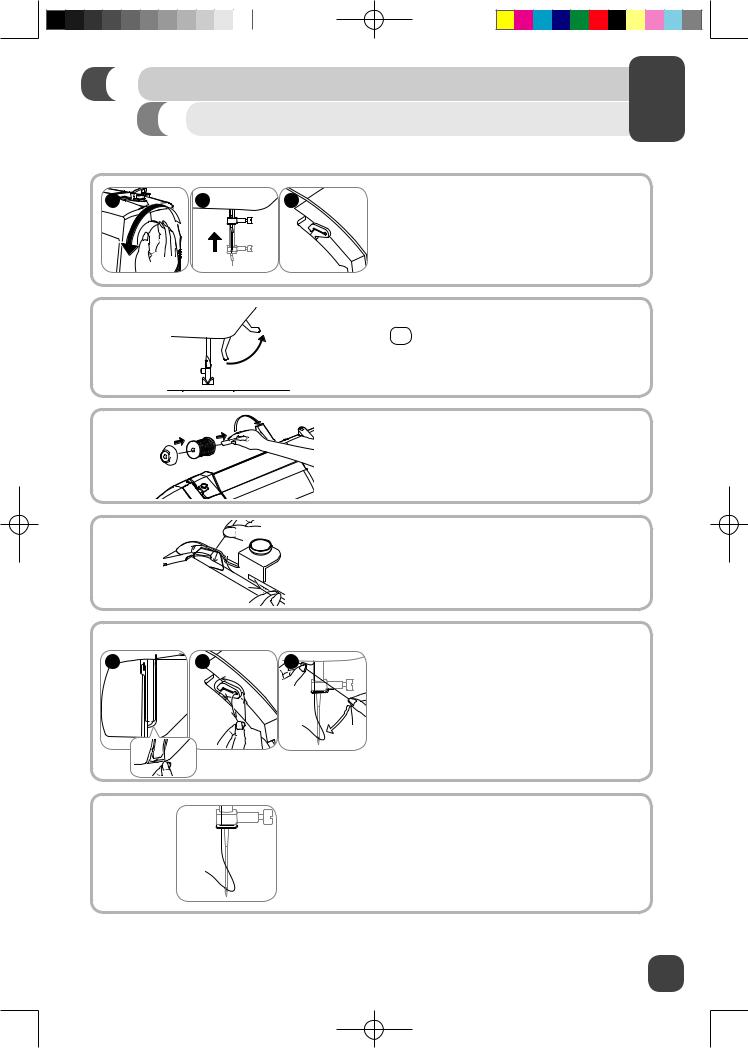
GETTING READY TO SEW
Threading the Upper Thread
For safety, turn off the power before threading the machine.
A B C
1. Start by turning the handwheel (A) toward you to raise the needle (B) and the thread take up
lever (C). You should be able to see the take up lever.
2. → Raise the presser foot lifter. This is necessary in order for the machine to be threaded correctly.
3. Place the thread spool and spool cap onto the spool holder.
4. Draw thread from the spool through the upper
|
|
|
thread guide at the top of the machine. Hold the |
|
|
|
thread with both hands and pull it into the pre- |
|
|
|
tension guide. |
|
|
|
5. (A) Bring the thread down the right channel, |
A |
B |
C |
around the U-turn, and up the left channel. |
(B) At the top of the left channel, hook the |
|||
|
|
|
thread from back to front through the slotted eye |
|
|
|
of the thread take-up lever. If the thread does |
|
|
|
not pass into the eye of the take-up lever, the |
|
|
|
machine will jam. After threading the take-up |
|
|
|
lever, bring the thread downward again. |
|
|
|
(C) Pass the thread behind the metal thread |
|
|
|
guide and then down to the needle. |
|
|
|
6. If you want to thread the needle manually, |
|
|
|
thread it from front to back. Pull about 6-8 |
|
|
|
inches of thread to the back beyond the needle |
|
|
|
eye. Alternatively, you can use the automatic |
|
|
|
needle threader to thread the eye of the needle. |
|
|
|
(See Page 14) |
13
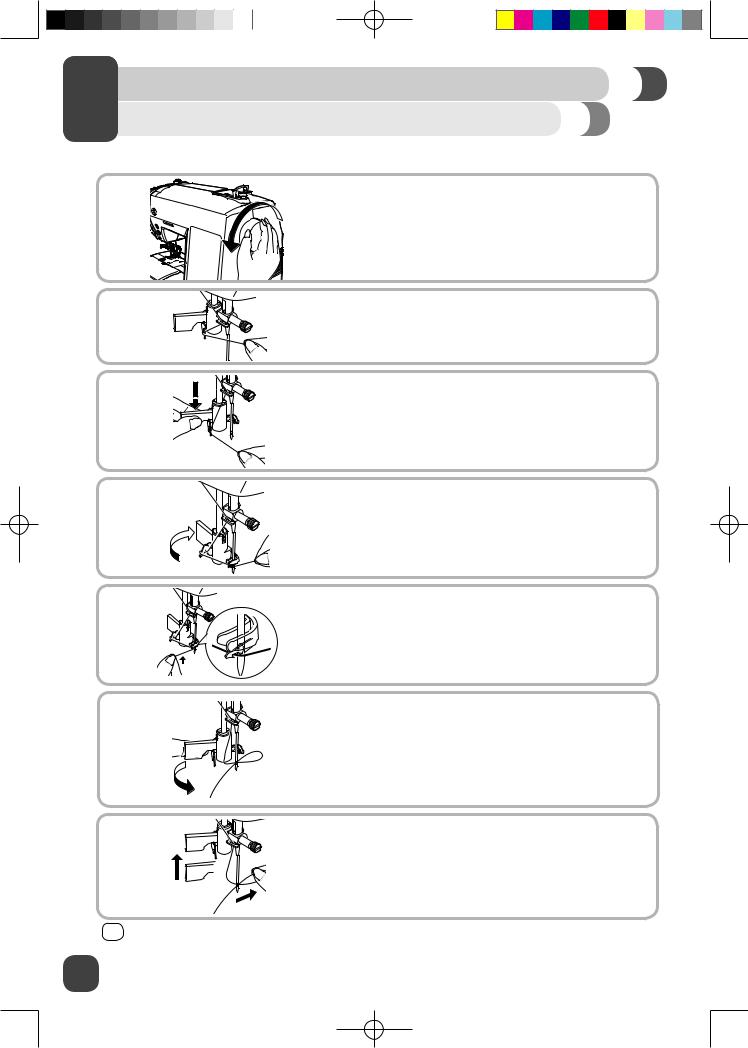
2 GETTING READY TO SEW
Automatic Needle Threader
For safety, turn off the power before using the automatic needle threader.
1.Raise the needle to its highest position by turning the handwheel toward you. If you turn the handwheel backward, the machine will jam
when you start to sew.
2. Pass thread around thread guide.
3. Press lever down as far as it will go.
4. Rotate the lever toward the back of the machine, this will slide the hook pin into the eye of the needle.
5. Pass the thread in front of the needle and under the hook.
6. Rotate the lever toward you and release the thread tail at the same time, this will form a loop at the back of the needle.
7. Pull the thread through the needle eye.
→ Pull about 6-8” of thread to the back beyond the eye of the needle. This will help prevent the needle from becoming unthreaded when you start to sew.
14
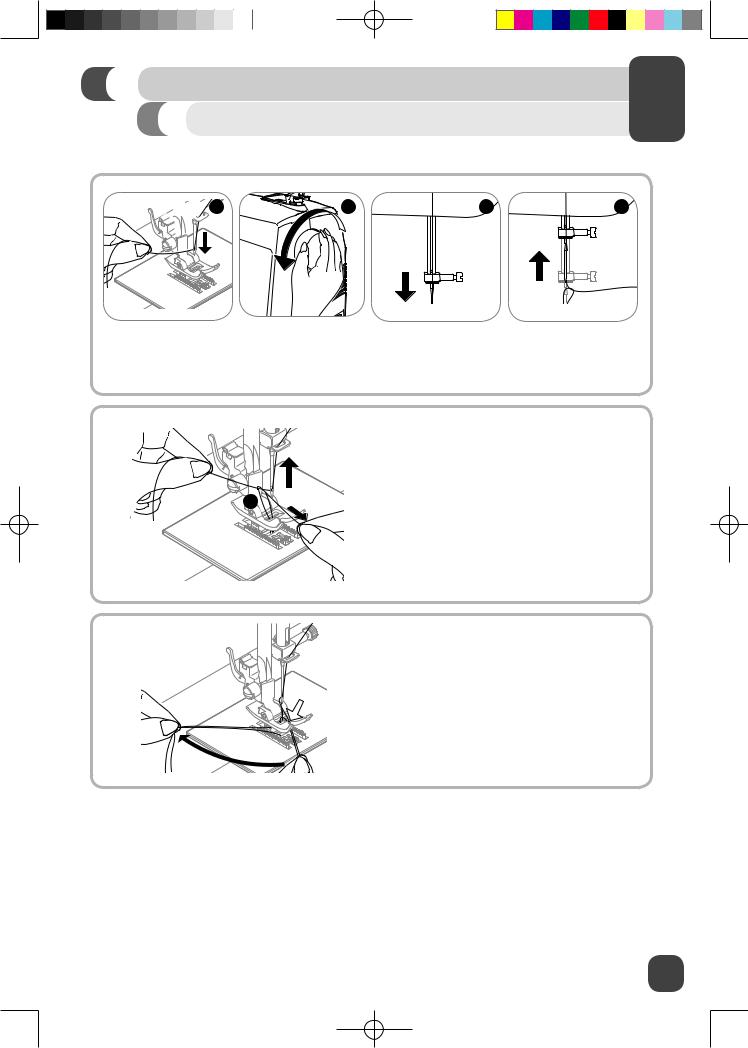
GETTING READY TO SEW
Drawing Up the Bobbin Thread
For safety, turn off the power before threading the machine.

 A B C D
A B C D
1.Hold the upper thread tail with the left hand (A). Turn the handwheel toward you (B), first lowering
(C) and then raising the needle (D).
|
2. As you turn the handwheel, gently pull the upper |
|
thread, which will bring a loop of the bobbin |
|
thread up through the hole of the needle plate |
E |
(E). Pull the loop to bring the bobbin thread end |
up through the opening in the needle plate. |
|
|
If a loop doesn’t pull up, turn the handwheel |
|
toward you one more time. If it still doesn’t come |
|
up, check that the bobbin thread is not trapped |
|
in the bobbin case area. |
3. Bring both threads under the presser foot and toward the back of the machine.
15
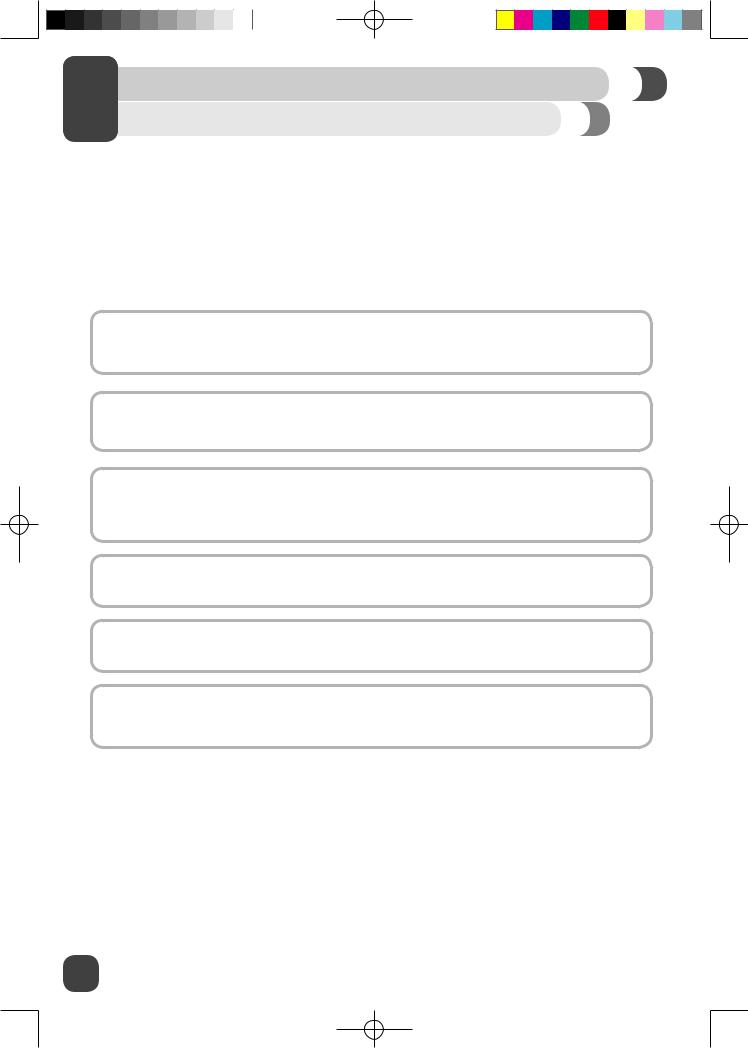
2 START SEWING
Before You Start Sewing
Now that your machine is threaded, we will show how to set up the machine for basic sewing techniques such as: sewing a straight stitch, sewing a decorative stitch, sewing a stretch stitch, sewing a buttonhole and sewing a button. With each technique, you have the opportunity to sew along.
For more information about the various stitches on your machine and how to use them, refer to the
Stitch Reference Guide by visiting www.singerco.com.
Here are a few other tips that you may find helpful before you begin:
When unpacking the machine, you may have noticed some small traces of oil around the needle plate or presser foot area. If so, wipe off any excess oil with a soft, dry cloth before you start sewing. It is also recommended that you sew on a piece of scrap fabric to remove excess oil.
The foot control is used to control the speed of your sewing. When you press down on the foot control, the machine will sew. The greater the pressure you place on the foot control, the faster the machine will sew. When you take your foot off the foot control, the machine will stop.
Needles are an important part of sewing. Using old, damaged or incorrect needles for your projects can affect sewing results. For information about which needle to use for your project, refer to the Stitch Reference Guide at www.singerco.com. For information on how to change the needle, See Page 25.
Depending on the sewing technique you want to do, it may be necessary to change to a different presser foot. For information on how to do this, See Page 26.
Review the page about Stitch Formation (See Page 17). This will help you understand what the stitching should look like when you sew.
Use the thread cutter on the machine (See Page 6) to trim thread tails when finished sewing. This is helpful because thread tails are left long enough so that the needle does not become unthreaded when you start sewing again.
16
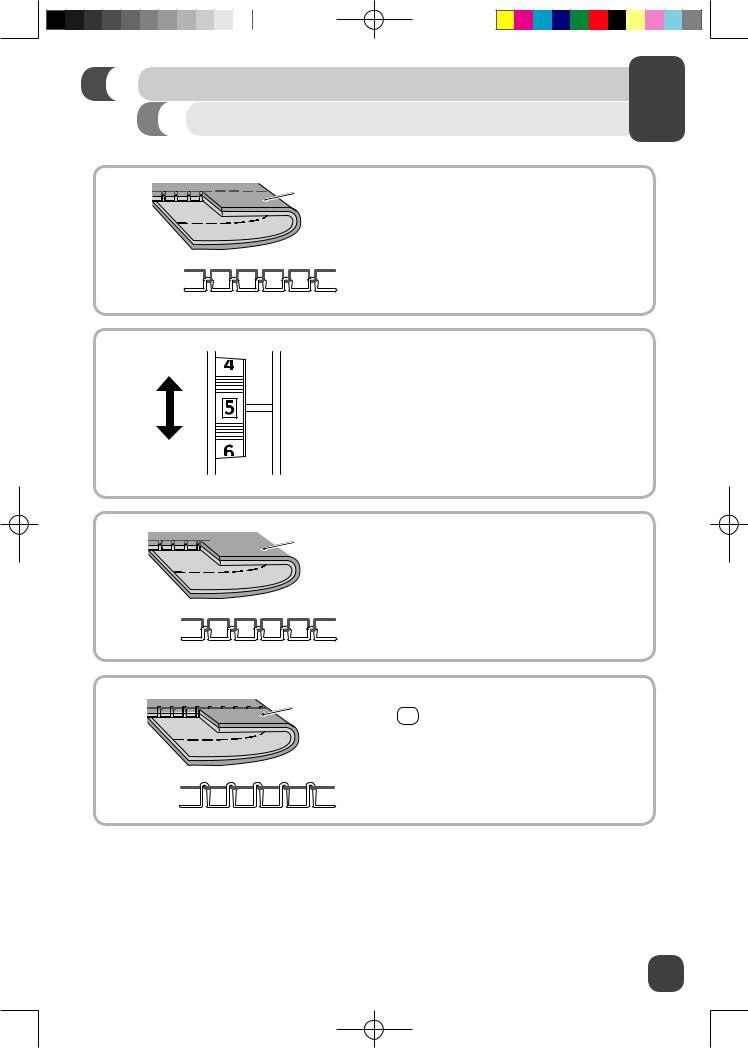
START SEWING
Stitch Formation
Reverse  side
side 
Upper thread
Bobbin thread
Surface |
1. How Stitches Form |
|
|
|
Stitches are formed when the upper thread |
|
and the bobbin thread interlock between the |
|
fabric layers. Stitching is well balanced when |
|
the needle thread appears on the top and the |
|
bobbin thread appears on the bottom. |
2.Thread Tension Dial
The Thread Tension Dial has a range of settings between 0 and 9. Most of your sewing will be done with your Thread Tension Dial set between 3 and 5. It can be adjusted to a higher number for more tension on the upper thread, if the upper thread seems too loose. It can be adjusted to a lower number for less tension on the upper thread, if the bobbin thread seems to be showing on the top side of the fabric.



 Surface
Surface
Reverse side
side 
Upper thread
Bobbin thread
Surface
Reverse side
side 
Upper thread
Bobbin thread
Adjusting Tension
Thread tension can also be adjusted for various sewing techniques. For basting (see Appendix), you can loosen it to a lower number so that the stitches can easily be removed. For gathering, you can turn it to a higher number.
3.→ When you sew, if you see large loops
on the underside of the fabric, this is actually an indication that the upper thread was
not threaded correctly, as it has no tension controlling it. For information on how to correct this, see the Troubleshooting and Maintenance section of this manual.
17
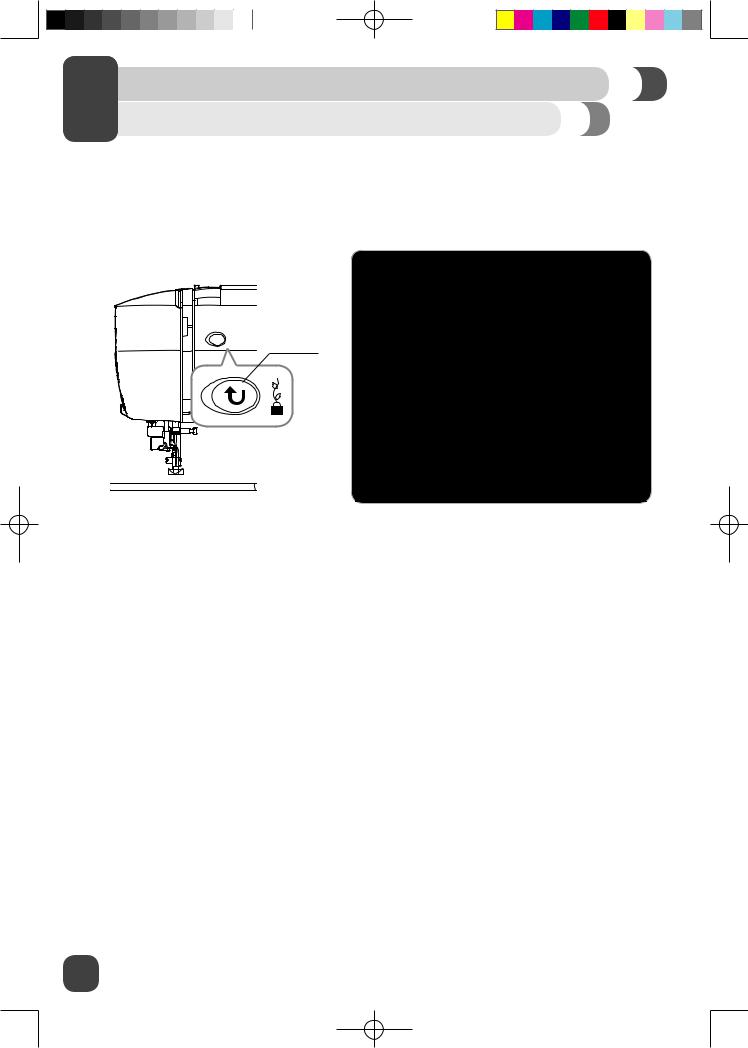
2 START SEWING
LCD Display and Function Buttons
3 |
4 |
2 |
|
1 |
6 |
5 |
|
8 |
7 |
1.REVERSE/AUTO-LOCK BUTTON sews reverse stitches when pressed for straight and zigzag stitches. Sews 3 locking stitches when pressed for all other stitches.
2.STITCH NUMBER shows the number of currently selected stitch. (See Page 19)
3.STITCH WIDTH/NEEDLE POSITION shows stitch width of selected stitch/needle position if straight stitch is selected. (See Page 19)
4.STITCH LENGTH shows stitch length of selected stitch.
5.STITCH SELECTION BUTTONS select desired stitch. (See Page 19)
6.STITCH WIDTH/NEEDLE POSITION ADJUSTMENT BUTTONS let you adjust the stitch width of selected stitch/needle position if straight stitch is selected. The change is shown instantly on the LCD display. (See Page 19)
7.STITCH LENGTH ADJUSTMENT BUTTONS let you adjust stitch length of selected stitch. The change is shown instantly on the LCD display.
8.STITCH NUMBER OVERVIEW shows the numbers of all available stitches for easy selection.
For examples of stitch patterns and further instruction, see the Stitch Reference Guide at www.singerco.com.
18
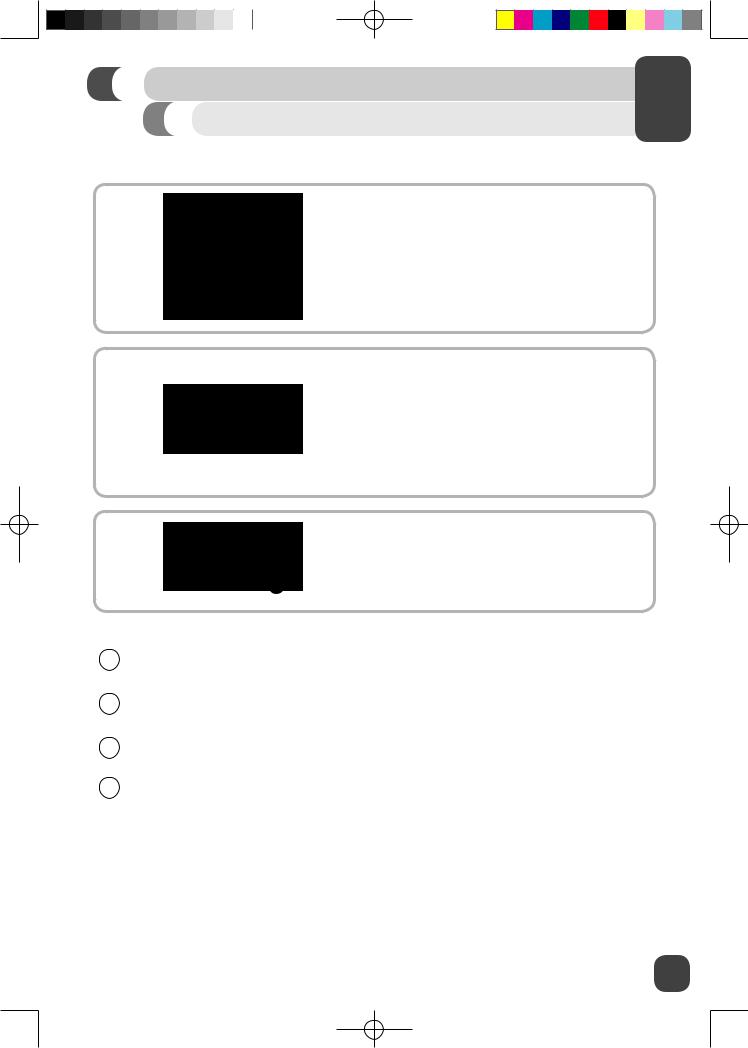
START SEWING
Stitch Selection
A
B B
C
C
Choosing Utility and Decorative stitch patterns:
The machine is automatically set to stitch 00 (Straight Stitch) when turned on.
Press the stitch selection buttons (A) to set desired stitch number. Left button sets the left digit on the LCD display, right button sets the right digit.
Adjusting the width/needle position of the stitch:
To adjust stitch width for selected stitch/needle position for Straight Stitch, press the stitch width/ needle position adjustment buttons (B). Left button decreases the width/moves the needle position to the left. Right button increases the width/moves the needle position to the right.
Adjusting the length of the stitch:
To adjust the stitch length for selected stitch, press the stitch length adjustment buttons (C).
Up button increases the length. Down button decreases the length.
The stitch width can be adjusted from 1.0 to 6.5. Some stitches have a limited stitch width.
The stitch length can be adjusted from 0.3 to 4.5. Some stitches have a limited stitch length.
There are 13 needle positions. 0.5 is far left, 3.5 is center, 6.5 is far right.
Default settings are underlined on the LCD display.
19
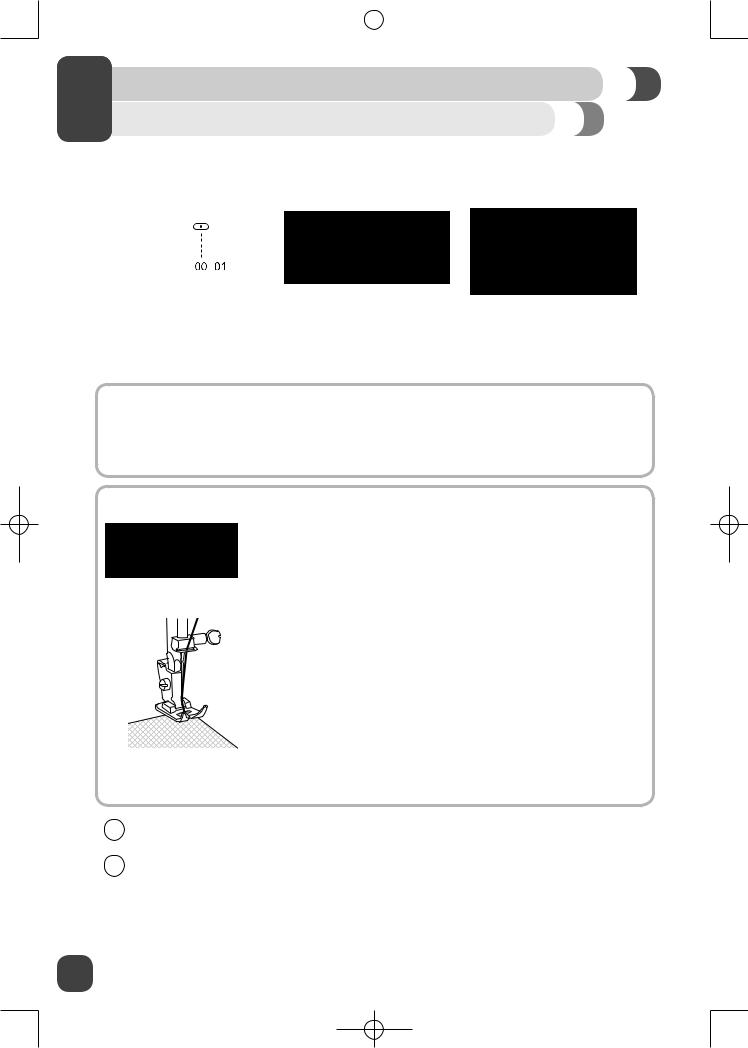
|
|
|
|
|
|
|
|
|
|
|
|
|
|
|
|
|
|
|
|
|
|
|
|
|
|
|
|
|
|
|
|
|
|
|
|
|
|
|
|
|
|
|
|
|
|
|
|
|
|
|
|
|
|
|
|
|
|
|
|
|
|
|
|
|
|
|
|
|
|
|
|
|
|
|
|
|
|
|
|
|
|
|
|
|
|
|
2 |
|
|
|
|
|
|
|
|
|
|
|
|
|
|
|
|
|
|
|
|
|
|
|
|
|
|
||
|
START SEWING |
|
|
|
|
|
|
|
|
|
|
|
|
|||||||||||||||
|
|
|
|
Sewing a Straight Stitch |
|
|
|
|
|
|
|
|
|
|
|
|
||||||||||||
|
|
|
|
|
|
|
|
|
|
|
LCD Display |
|
Function Buttons |
|||||||||||||||
|
|
|
|
|
|
|
|
|
|
|
|
|
|
|
|
|
|
|
|
|
|
|
|
|
|
|
|
|
|
|
|
|
|
|
|
|
|
|
|
|
|
|
|
|
|
|
|
|
|
|
|
|
|
|
|
|
|
|
|
|
|
|
|
|
|
|
|
|
|
|
|
|
|
|
|
|
|
|
|
|
|
|
|
|
|
|
|
|
|
|
|
|
|
|
|
|
|
|
|
|
|
|
|
|
|
|
|
|
|
|
|
|
|
|
|
|
|
|
|
|
|
|
|
|
|
|
|
|
|
|
|
|
|
|
|
|
|
|
|
|
|
|
|
|
|
|
|
|
|
|
|
|
|
|
|
|
|
|
|
|
|
|
|
|
|
|
|
|
|
|
|
|
|
|
|
|
|
|
|
|
|
|
|
|
|
|
|
|
|
|
|
|
|
|
|
|
|
|
|
|
|
|
|
|
|
|
|
|
|
|
|
|
|
|
|
|
|
|
|
|
|
|
|
|
|
|
|
|
|
|
|
|
|
|
|
|
|
|
|
|
|
|
|
|
|
|
|
|
|
|
|
|
|
|
|
|
|
|
|
|
A straight stitch is used for sewing seams and topstitching.
HOW TO:
1.Set the machine to straight stitch. The machine will automatically default to straight stitch when it is turned on.
2.The Stitch Length can be set at the stitch length that you desire. (See Page 19)
SEW ALONG:
1.Set the machine to straight stitch 00. The machine will automatically default to straight stitch when it is turned on.
2. The Stitch Length is automatically set to 2.5. This is an average stitch length setting for regular sewing.
3.Place the fabric under the All-Purpose Foot or the Sew Easy Foot (See Page 26) with the right-hand edge of the fabric lined up with the desired seam guide line on the right side of the needle plate.
Lower the presser foot, then step on the foot control to begin sewing. Always make sure that the presser foot is lowered before you begin to sew. If you fail to do so, the machine will jam as you begin to sew. Start your seam by sewing 2 to 3 stitches. Press the reverse button to sew backwards 2 to 3 stitches, which will lock the end of the seam so the stitches don’t come undone. Release the reverse button to sew forward again. Continue sewing the length of the seam. Press the reverse button at the end of the seam and sew backwards 2 to 3 stitches. Release the reverse button to sew forward again to finish.
Use a slightly shorter stitch length for lightweight fabrics, finer threads and needles. Use a longer stitch length such as 3 or 4 for heavy weight fabrics.
It may be helpful to gently hold the thread tails with your left hand for the first few stitches, as this will help guide the fabric under the foot as you begin to sew.
20
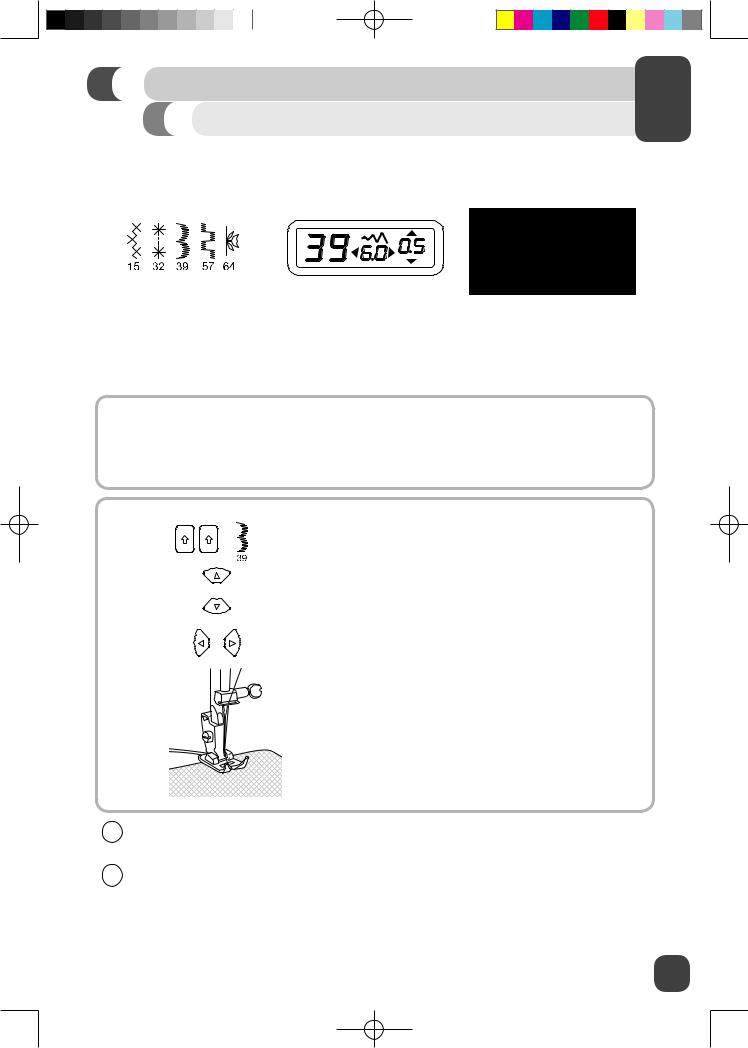
START SEWING
Sewing a Decorative Stitch
LCD Display |
Function Buttons |
||||
|
|
|
|
|
|
|
|
|
|
|
|
|
|
|
|
|
|
A decorative stitch is used for embellishing and adding flair to your sewing projects.
(Go to www.singerco.com to view other decorative stitches that can be used).
HOW TO:
1.Set the machine to the desired stitch by entering the number of the desired stitch. (See Page 19)
2.Set the Stitch Length between 0.3 and 4.5. (See Page 19)
3.Set the Stitch Width between 1.0 and 6.5.(See Page 19)
SEW ALONG: Scallop Stitch
1. Set the stitch selection buttons to 39.
2. Set the Stitch Length to number 0.5.
3. Set the Stitch Width to 6.0.
4. Place the fabric under the All-Purpose Foot with the right-hand edge of the fabric lined up with the desired seam guide line on the right side of the needle plate. Lower the presser foot, then step on the foot control to begin sewing. Sew 2 to 3 stitches and then backstitch (See Page 20) to reinforce the seam.
Use a stabilizer (see Appendix) on the underside of the fabric if there is gathering or puckering as you sew. Decorative stitching can be used almost anywhere on your project!
It may be helpful to decrease the upper tension by 1 or 2 numbers when sewing decorative stitches. This will help prevent the bobbin thread from possibly showing on the top when sewing denser stitches.
21
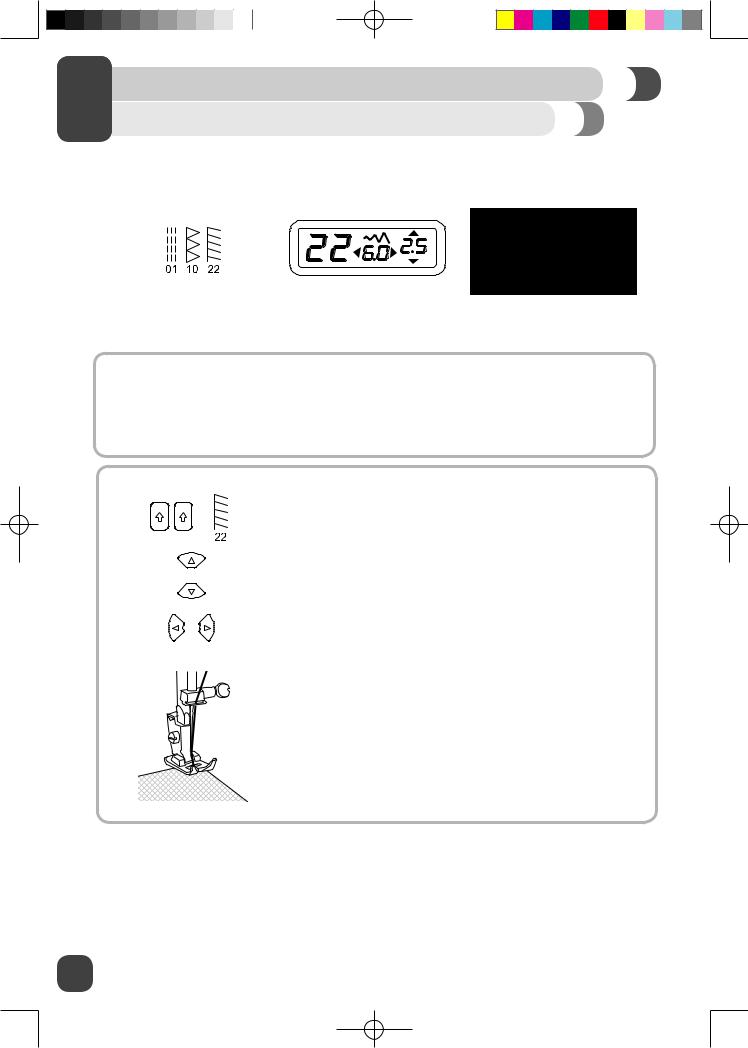
2 START SEWING
Sewing a Stretch Stitch
LCD Display |
Function Buttons |
||||
|
|
|
|
|
|
|
|
|
|
|
|
|
|
|
|
|
|
A stretch stitch is used for knit fabrics. This type of seam will stretch with the fabric. (Go to www.singerco.com to view other stretch stitches that can be used).
HOW TO:
1.Set the machine to the desired stitch by entering the number of the desired stitch. (See Page 19)
2.Set the Stitch Length between 0.3 and 4.5. (See Page 19)
3.Set the Stitch Width between 1.0 and 6.5. (See Page 19)
SEW ALONG: Overedge Stitch
1. Set the stitch selection buttons to 22.
2. Set the Stitch Length to number 2.5.
3. Set the Stitch Width to 6.0.
4. Place the fabric under the All-Purpose Foot with the right-hand edge of the fabric lined up with the desired seam guide line on the right side of the needle plate. Lower the presser foot, then step on the foot control to begin sewing.
22
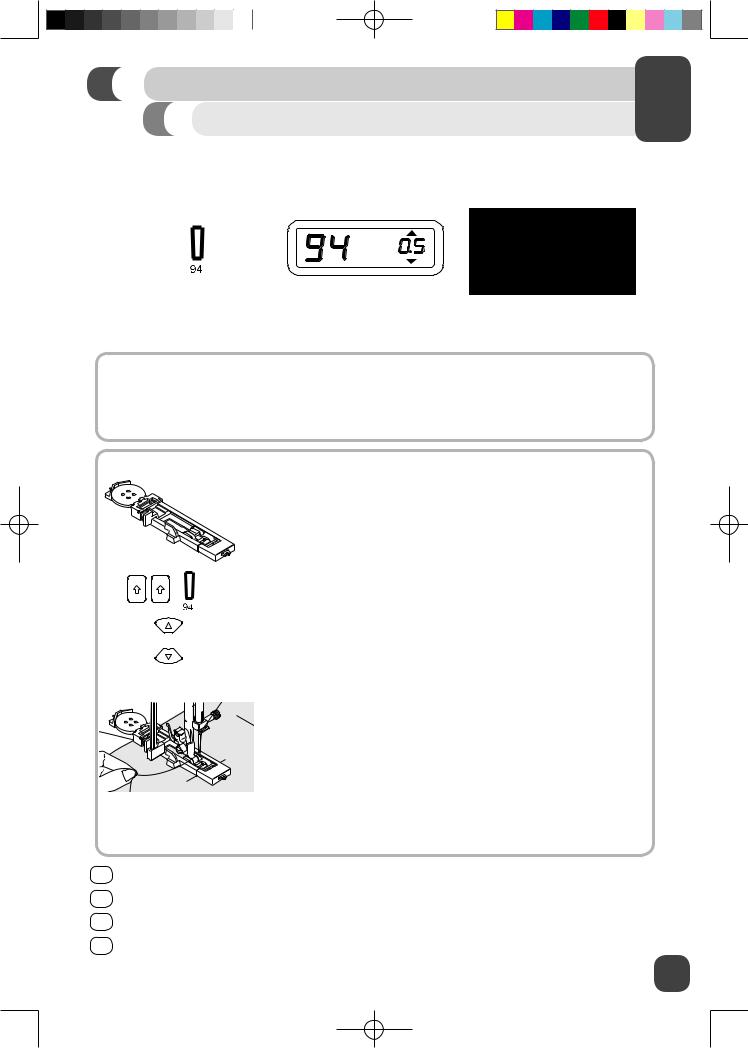
START SEWING
Sewing a 1-Step Buttonhole
LCD Display |
Function Buttons |
||
|
|
|
|
|
|
|
|
|
|
|
|
This machine has an infinite buttonhole, as well as 6 built-in buttonholes, allowing you to sew buttonholes in one easy step. The buttonhole stitches are numbered 91-99.
HOW TO:
1.Set the machine to the desired stitch by entering the number of the desired buttonhole stitch. (See Page 19)
2.Set the Stitch Length between 0.5 and 0.8. (See Page 19)
SEW ALONG: Buttonhole Stitch
1. Mark position and length of buttonhole on the fabric. Place the button at the back of the buttonhole foot.
2. Remove the All-Purpose Foot and attach the Buttonhole Foot (See Page 26). Pass upper thread through the hole of the foot and bring thread to the left.
3. Set the stitch selection buttons to 94.
4. Set the Stitch Length to 0.5
5. Place the fabric under the foot so that the center line mark on your fabric is aligned with the center of the buttonhole foot and that the cross line mark on the fabric aligns with the center hole of the Buttonhole Foot. Lower the presser foot.
6. Pull the buttonhole lever all the way down and center it between the front and back brackets located on the left of the buttonhole foot.
7. Hold upper thread slightly and start to sew until the buttonhole is completed.
8.Return the buttonhole lever to its original position once all buttonholes are completed.
→Use a stabilizer to support the stitches.
→Slightly reducing your upper tension by 1 or 2 numbers will improve results.
→Always test sew on a scrap piece of your fabric.
→When sewing an infinite buttonhole, do not lower the buttonhole lever and select stitches 91 through
93 for the length of buttonhole that you desire. |
23 |
|
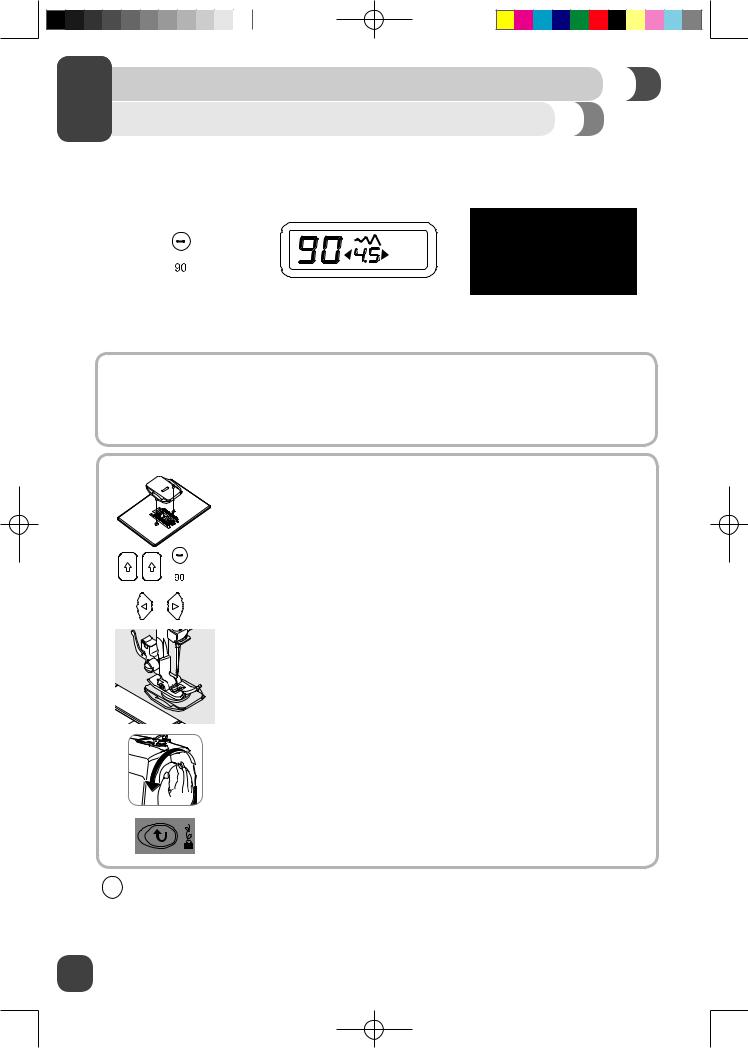
2 START SEWING
Sewing a Button
LCD Display |
Function Buttons |
|
|
|
|
HOW TO:
1.Set the machine to Button Sewing Stitch by setting the numerical selection buttons to 90. (See Page 19)
2.Set the Stitch Width between 2.0 and 4.5 (See Page 19)
SEW ALONG: Attaching a Button
1. Attach the Darning Plate to the needle plate directly below the presser foot. To do this line up the prongs on the underside of the Darning Plate with the holes in the needle plate. Push down to snap it in place.
2. Set the Stitch Selection buttons to 90.
3. Set the Stitch Width to 4.5.
4. Place the button on the fabric, then line up the button directly under the All-Purpose Foot so the 2 holes of the button appear in the opening in the foot.
5.Turn the hand wheel toward you to make sure the needle moves from
the left hole into the right hole of the button without interference. Adjust stitch width if necessary. To test the movement of the needle turn the handwheel manually toward you several times to make sure the needle does not hit the button. Step on the foot control and sew 10 to 12 stitches.
6. Press the Auto-Lock button to secure the stitching.
Remove the Darning Plate when finished.
24
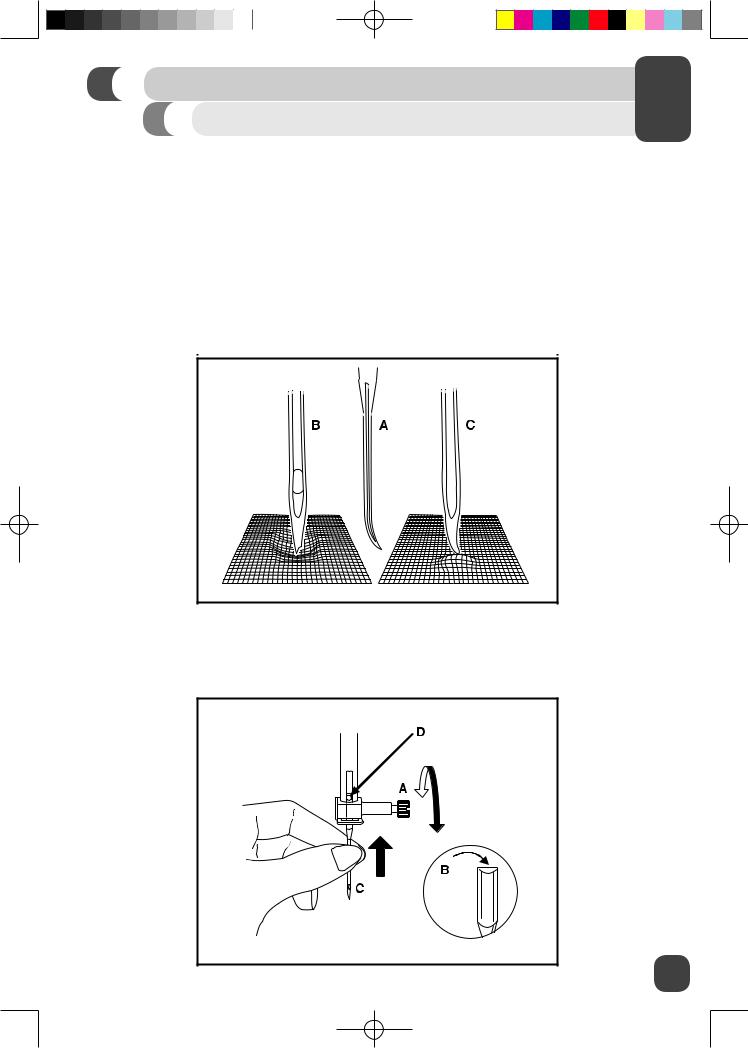
START SEWING
Inserting and Changing Needles
Turn the machine off before changing the needle.
Change the needle regularly, especially if it is showing signs of wear resulting in sewing problems. Needles can show signs of wear when you see snags in the fabric or hear a slight popping sound as you are sewing.
If the needle becomes bent (A), the point becomes damaged (B) or the needle becomes dull (C), you should replace it with a new needle and discard the old one.
Generally, the needle should be replaced after every 4 projects or approximately every 16 hours of sewing time.
It is also important to use the right needle for the fabric you are sewing. (Go to www.singerco.com to view the Stitch Reference Guide)
For best results, use SINGER® branded needles in your SINGER® sewing machine.
Loosen the needle clamp screw (A) by turning the screw toward you. Remove and discard the old needle.
Insert the new needle, making sure that the flat side of the top part of the needle is facing the back of the machine (B).
Insert the new needle as far up as it will go (C and D).
Tighten the needle clamp screw (A) securely by turning it toward the back.
25
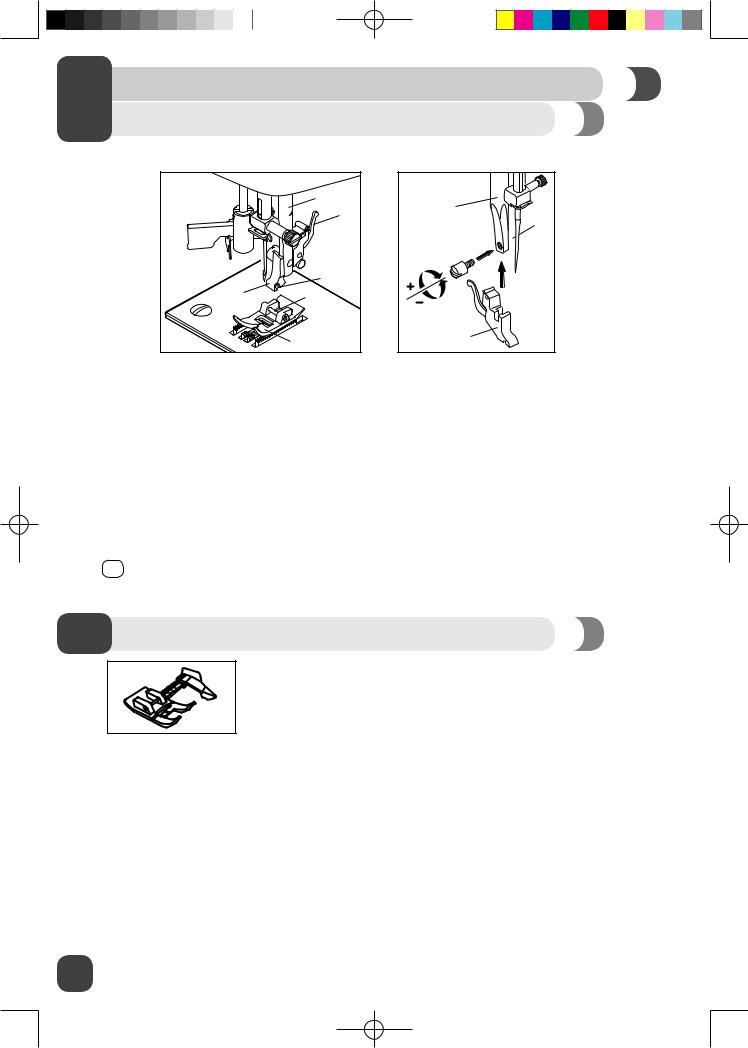
START SEWING
Changing the Presser Foot
For safety, turn off the power before changing the presser foot.
|
a |
|
f |
|
c |
b |
d |
|
e |
g |
h |
Before changing the presser foot, raise the presser foot lifter.
The presser foot holder (b) is attached to the presser bar (a). The presser foot (e) has a presser foot pin (d) that connects to the presser foot holder, sometimes called a shank (b). The shank has a groove
(c) on its underside, which connects it to the presser foot.
To remove a presser foot from the shank, press the lever (f) at the back of the shank. The foot will release. To attach a presser foot, line up the presser foot pin (d) underneath the groove (c) on the shank (b). Lower the presser foot lifter, bringing the shank’s groove down over the pin. The foot will snap on.
Some optional presser feet require you to remove the shank from the machine. To remove the shank from the machine (see above) loosen and remove the screw that holds the presser foot onto the presser bar (g), then remove the shank (h). To replace the shank, set the shank onto the presser bar, then replace the screw.
→ This machine has a low shank with snap-on presser feet. When shopping for optional presser feet and attachments for your machine, look for low-shank, snap-on style.
Sew Easy Foot
THIS BONUS ITEM IS NOT INCLUDED WITH MACHINES SOLD IN SOME AREAS AND MAY BE AN OPTIONAL ACCESSORY. FOR INFORMATION ON PURCHASING THIS ITEM, GO TO WWW.SINGERCO.COM.
The Sew Easy Foot has a guide to help you sew the most accurate seams every time. The foot has an extension marked with the most popular seam allowances and a movable fabric guide that can be set wherever you want for the project you are making.
1.Attach the Sew Easy Foot.
2.Select Straight Stitch.
3.With your needle set in the center position, use the guide to select 3/8”, 1/2”, 5/8”, 3/4”, and even 1” seam allowances.
4.Place your fabric under the foot, lining up the raw edges with the guide on the foot. Lower the presser foot lifter, then sew.
26
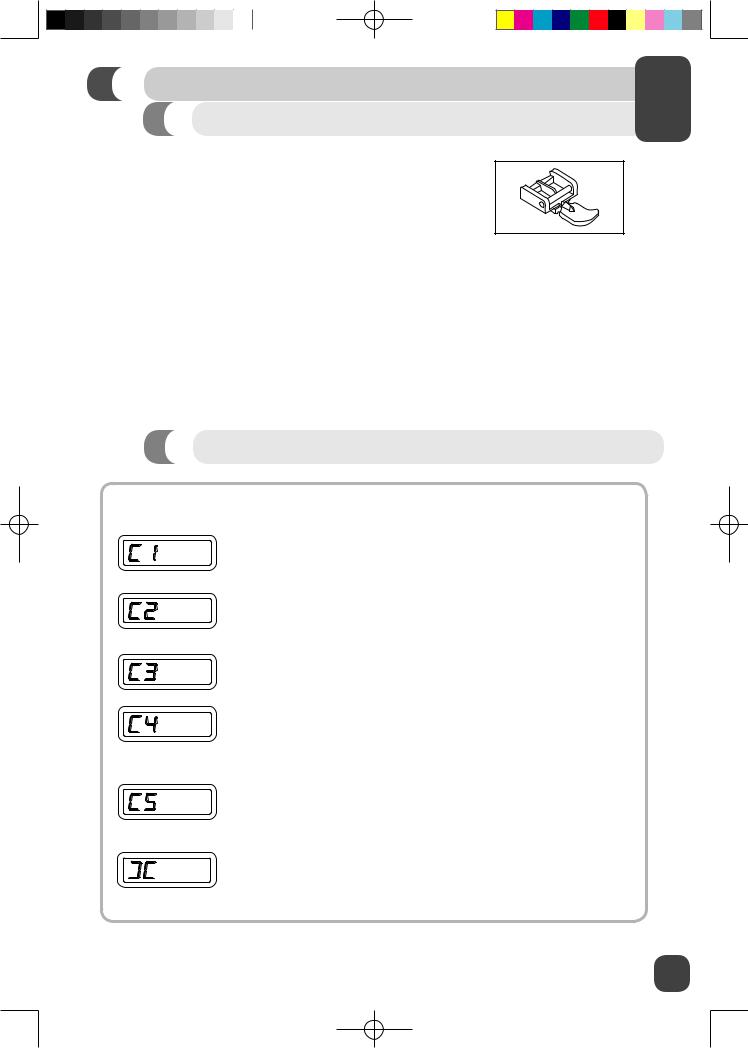
START SEWING
Zipper Foot
Your machine may include a Zipper Foot. It is used with a straight stitch to apply centered and lapped zippers.
1.Attach the Zipper Foot.
2.Attach the left side of the zipper foot when sewing the right side of the zipper.
3.Attach the right side of the zipper foot when sewing the left side of the zipper. Go to www.singerco.com for more information on zipper applications.
Helpful LCD Display Messages 
If an incorrect operation is made, a helpful message will be displayed. When a helpful message is displayed, fix the problem following the instructions below.
Bobbin winder is moved to right (operating position) during sewing.
Solution: Check bobbin winder and move it to left.
Buttonhole lever is not lowered or raised.
Solution: Lower buttonhole lever when sewing buttonholes. Raise buttonhole lever when sewing stitch patterns.
Foot control plug is pulled out, while operating foot control.
Solution: Push in foot control plug.
Machine is locked up due to thread entangled with bobbin case or rotation interrupted forcibly.
Solution: Turn off power switch and eliminate the problem that caused the machine to stop.
Reverse/tacking stitch button is pushed, while buttonhole stitch is selected.
Solution: Tacking stitch is made automatically after buttonhole stitch is completed. It is not necessary to push the reverse/tacking stitch button.
Bobbin winder is in operation.
Solution: Move bobbin winder to left when it is not used.
27
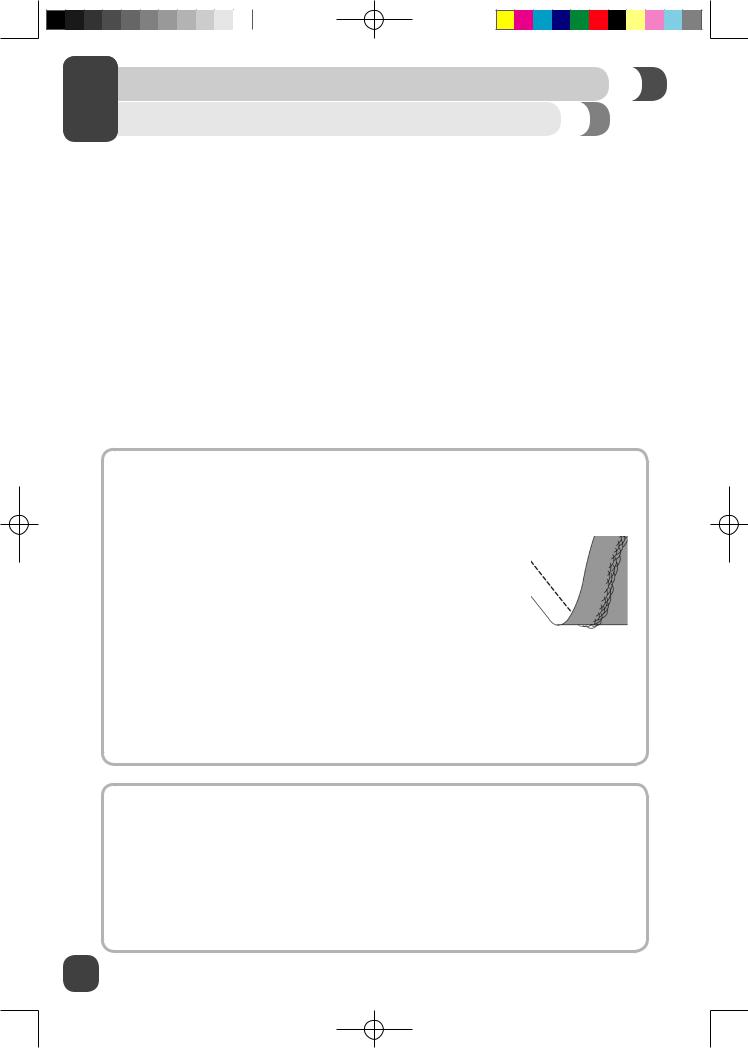
TROUBLESHOOTING AND MAINTENANCE
Troubleshooting
1.Thread Loops on Underside of Fabric
2.Bobbin Thread Showing on Top of Fabric
3.Upper Thread Breaking
4.Thread is Shredding
5.Thread Bunching at Beginning
6.Skipping Stitches
7.Bobbin Winding Diffi culties
8.Bobbin Thread Breaking
9.Needles Breaking
10.Stitches Distorted
11.Fabric Puckers
12.Fabric Is “Tunneling” Under Stitches
13.Machine Not Feeding Fabric
14.Needle Threader Not Working
15.Loud Noise When Sewing
16.Machine Will Not Run
1. THREAD LOOPS ON UNDERSIDE OF FABRIC
Possible Cause: Thread looping on the underside of the fabric is always an indication that the upper thread is not correctly threaded. This happens when the upper thread is not correctly placed in the tension mechanism and has not been threaded through the take up lever.
Solution: Rethread machine, making sure to fi rst raise the presser foot lifter before starting to thread, so thread can be properly seated in the tension mechanism and take up lever. (See Page 13)
To know if you have rethreaded the machine correctly, try this simple test:
•Raise the presser foot lifter and thread the top of the machine.
•Thread the needle, but don’t put the thread under the presser foot yet. As you pull the upper thread to the left, it should pull freely.
•Put the presser foot lifter down. As you pull the upper thread to the left, you should feel resistance. This means you are threaded correctly.
•Put the thread under the presser foot, and then draw up the bobbin thread. Slip both thread tails under the presser foot towards the back. Lower presser foot and begin sewing.
If you put the presser foot lifter down, but the thread still pulls freely (you feel no difference whether the presser foot is up or down), this means you have threaded incorrectly. Remove the upper thread and rethread the machine.
2. BOBBIN THREAD SHOWING ON TOP OF FABRIC
Possible Cause: Top thread tension too tight. Solution: Reduce upper thread tension. (See Page 17)
Possible Cause: Thread path is obstructed, putting extra tension on top thread.
Solution: Check that the top thread path is not obstructed and thread is moving freely through the thread path. (See Page 13)
Possible Cause: Bobbin thread not in bobbin case tension. Solution: Rethread bobbin. (See Page 12)
28
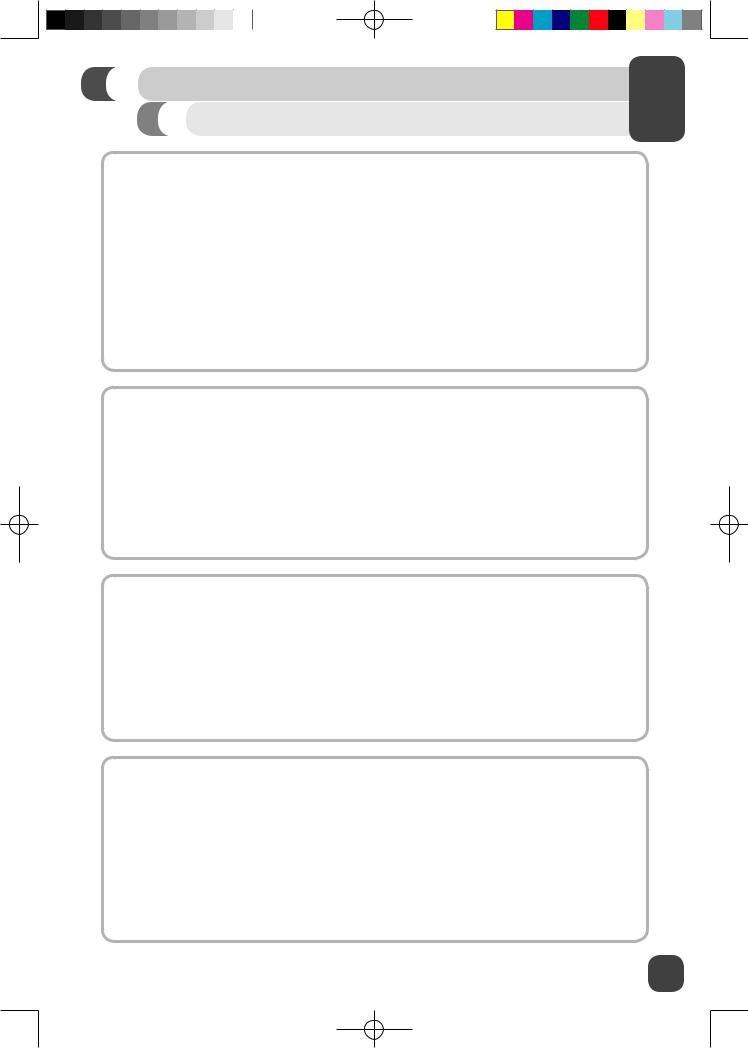
TROUBLESHOOTING AND MAINTENANCE
Troubleshooting
3. UPPER THREAD BREAKING
Possible Cause: Thread path obstructed.
Solution: Check if thread is caught on thread spool (rough spots on the spool itself) or behind spool pin or spool cap (if the thread has fallen behind the spool cap and therefore cannot feed freely through the machine path). (See Page 13)
Possible Cause: Machine is not threaded correctly.
Solution: Remove upper thread completely, raise presser foot lifter, rethread machine making sure thread is in take-up lever (raise take up lever to its highest position by turning hand wheel toward you. (See Page 13)
Possible Cause: Upper tension too tight.
Solution: Reduce upper thread tension. (See Page 17)
4. THREAD IS SHREDDING
Possible Cause: Thread is old or poor quality.
Solution: Rethread the top of the machine and bobbin with good quality thread. (See Page 13)
Possible Cause: The needle is either worn or old, or it is the wrong style or size for the thread being used. Though it may seem that the machine is shredding the thread, it is usually the needle causing this. If the needle is old or worn out, or if the needle is too small for the thickness of thread, the eye of the needle can cause the thread to shred.
Solution: Change to a fresh needle in the correct size for the thickness/weight of thread being used. (See Page 25)
5. THREAD BUNCHING AT BEGINNING
Possible Cause: Top & bobbin threads have not been properly placed underneath presser foot before starting to sew.
Solution: Ensure that both the top thread and the bobbin thread are under the presser foot and toward the back before starting to sew. (See Page 15)
Possible Cause: Sewing was started with no fabric under the presser foot.
Solution: Place fabric under foot, making sure that needle comes down into fabric; lightly hold both thread tails for first few stitches. (See Page 20)
6. SKIPPING STITCHES
Possible Cause: Needle inserted incorrectly.
Solution: Check that flat side of needle top is toward back of machine and needle is up as far as it can go, then tighten needle clamp screw. (See Page 25)
Possible Cause: Wrong needle for fabric sewn.
Solution: Use correct style & size of needle for fabric. (Go to www.singerco.com to view the Stitch Reference Guide)
Possible Cause: Bent, dull or damaged needle.
Solution: Discard needle and insert new needle. (See Page 25)
29
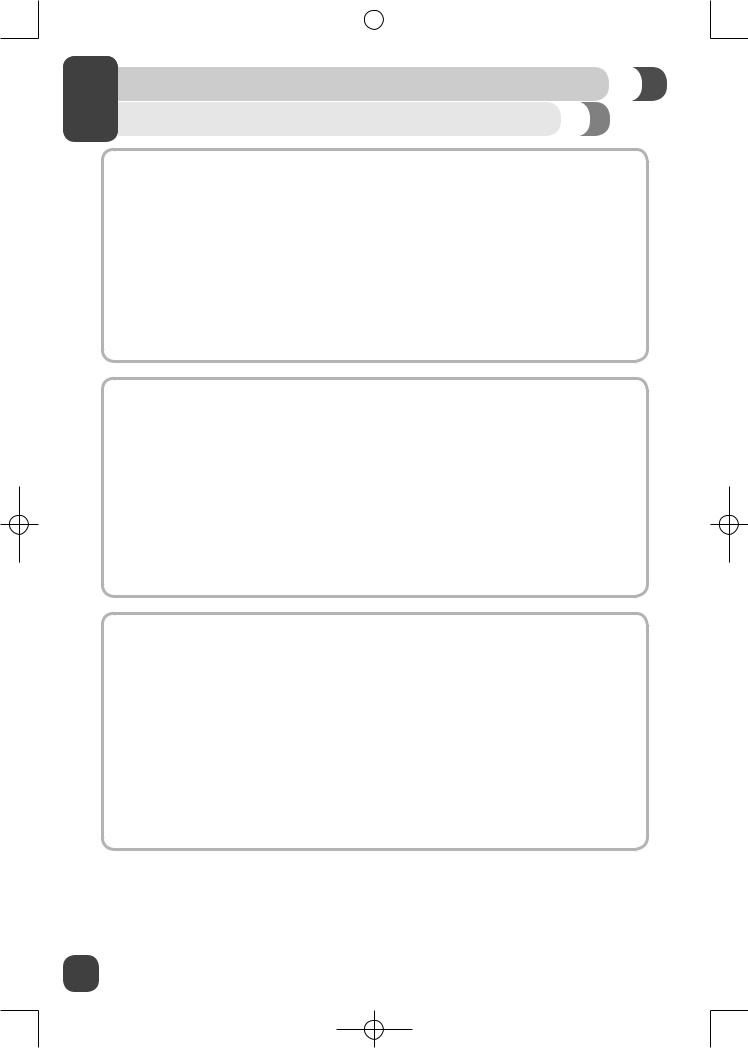
|
|
|
|
|
|
|
|
|
|
|
|
|
|
|
|
|
|
|
|
|
|
|
|
|
|
|
|
|
|
|
|
|
|
|
|
|
|
|
|
|
|
|
|
|
|
|
|
|
|
|
|
|
|
|
|
|
|
|
|
|
|
|
|
|
|
|
|
|
|
|
|
|
|
|
|
|
|
2 |
|
|
|
|
|
|
|
|
|
|
|
|
|
|
|
|
|
|
|
|
|
|
|
||
|
TROUBLESHOOTING AND MAINTENANCE |
||||||||||||||||||||||||
|
|
|
|
Troubleshooting |
|||||||||||||||||||||
7. BOBBIN WINDING DIFFICULTIES
Possible Cause: Bobbin thread loosely wound on bobbin.
Solution: Rewind bobbin, making sure that the thread is placed snuggly in the bobbin winding tension disk. (See Page 11)
Possible Cause: Bobbin winding spindle not fully engaged, therefore bobbin not winding. Solution: Check that the bobbin winding spindle has been fully engaged before starting to wind. (See Page 11)
Possible Cause: Bobbin is winding sloppily because thread end not held at beginning of winding process.
Solution: Before starting to wind, hold the thread tail (coming out of the bobbin) securely, allow the bobbin to partially fill, then stop to trim the thread tail close to the bobbin. (See Page 11)
8. BOBBIN THREAD BREAKING
Possible Cause: Bobbin threaded incorrectly.
Solution: Check that bobbin is placed correctly in the bobbin case. (See Page 12)
Possible Cause: Bobbin wound too full or unevenly.
Solution: Bobbin thread may not have been correctly placed into bobbin winding tension disk during the bobbin winding process. (See Page 11)
Possible Cause: Dirt or lint in bobbin case. Solution: Clean bobbin case. (See Page 33)
Possible Cause: Wrong bobbins being used.
Solution: Use SINGER® bobbins that are the same style as those that come with the machine – don’t substitute. Your machine comes with SINGER® Class 15 metal bobbins.
9. NEEDLES BREAKING
Possible Cause: Bent, dull or damaged needle.
Solution: Discard needle, insert new needle. (See Page 25)
Possible Cause: Wrong size needle for fabric.
Solution: Insert appropriate needle for fabric type. (Go to www.singerco.com to view the Stitch Reference Guide)
Possible Cause: Machine not threaded correctly. Solution: Rethread the machine completely. (See Page 13)
Possible Cause: “Pushing” or “pulling” fabric.
Solution: Don’t manually push/pull fabric in order to sew, but allow the machine’s feed teeth to draw fabric under the presser foot as you guide it. (See Page 20)
30
